Photoshoot
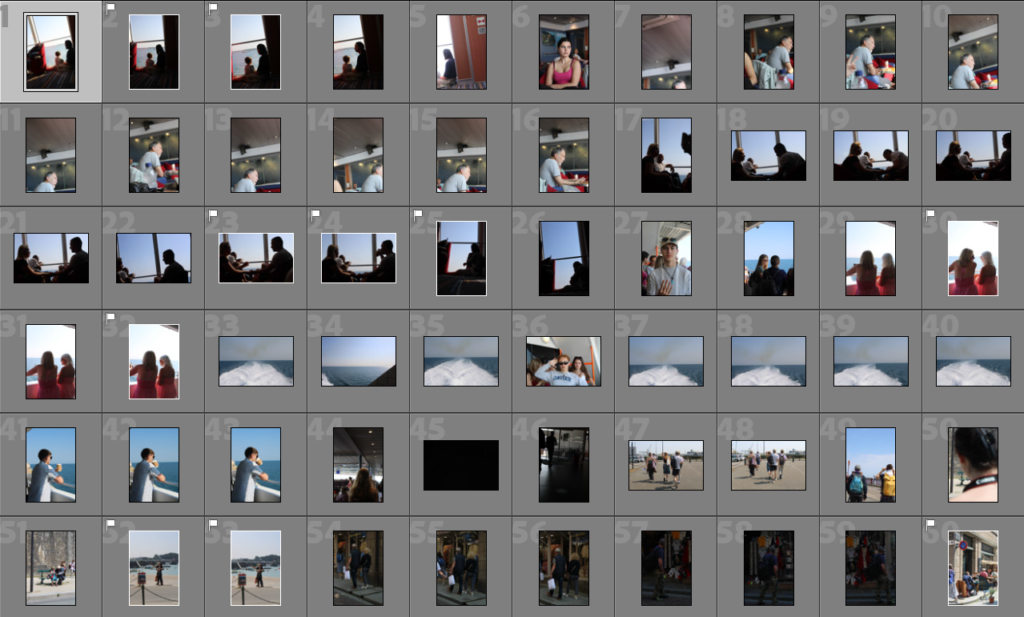
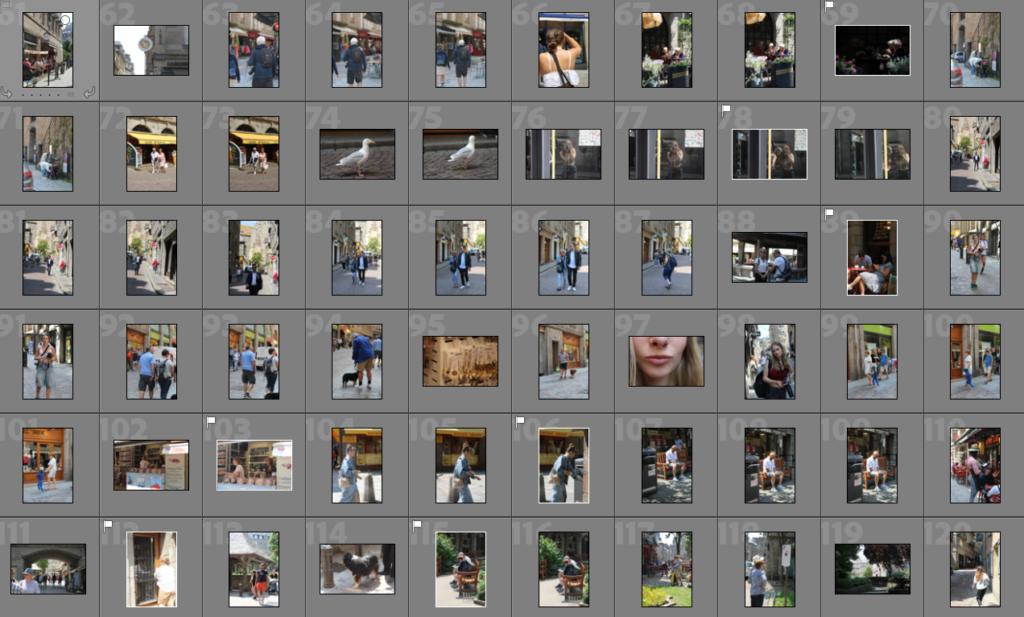

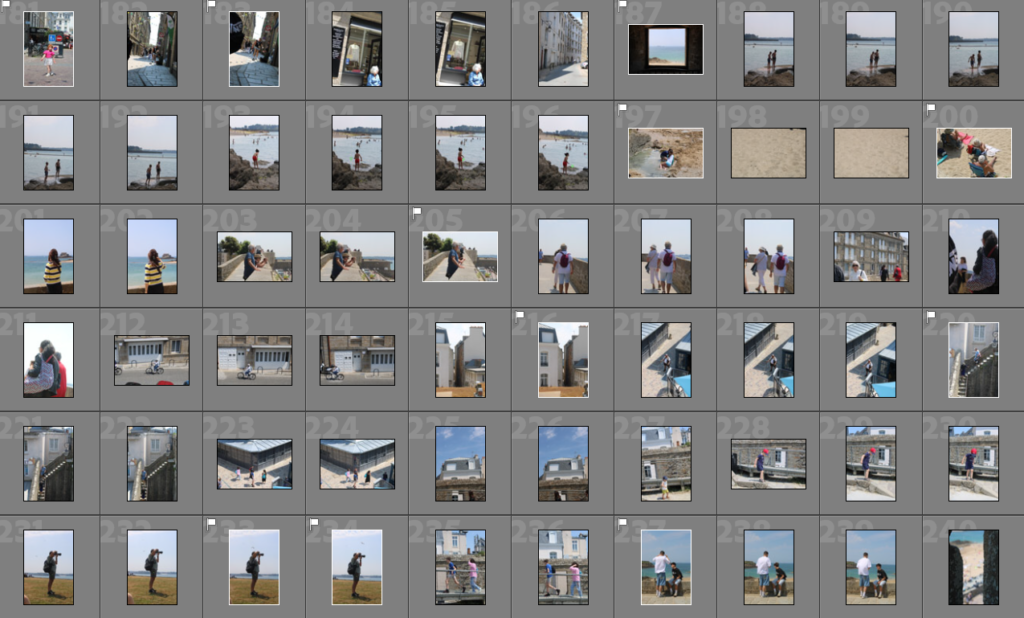
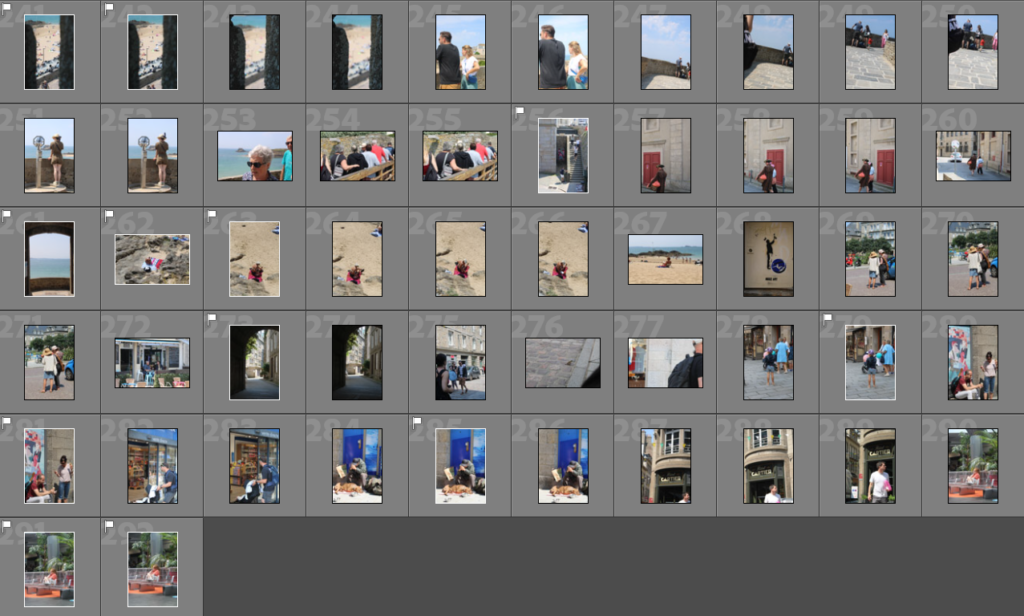
Sub Selection
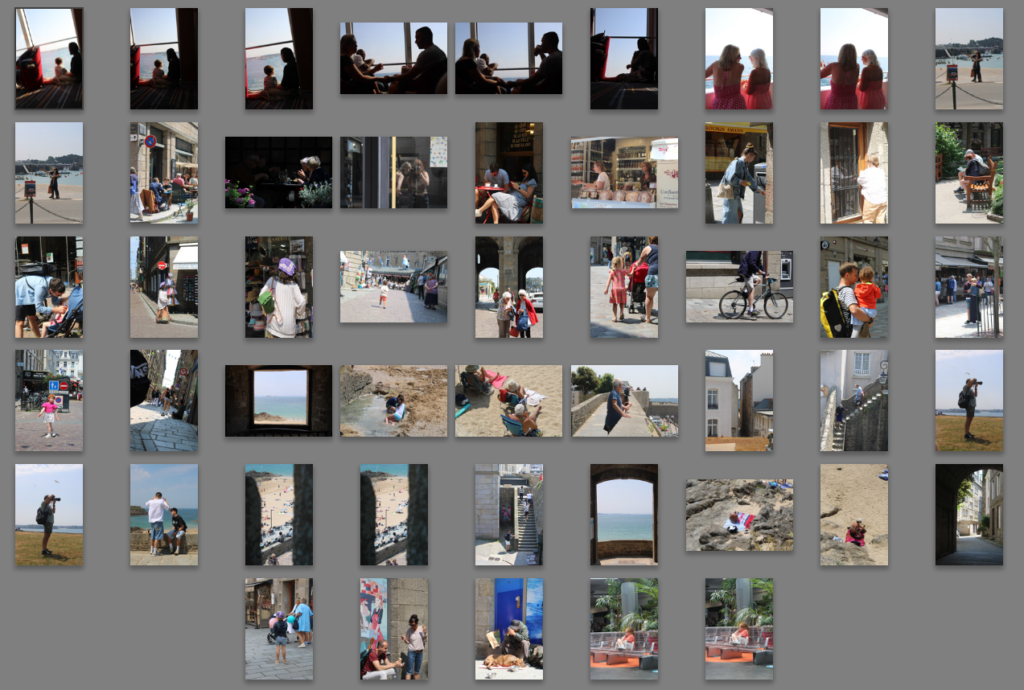
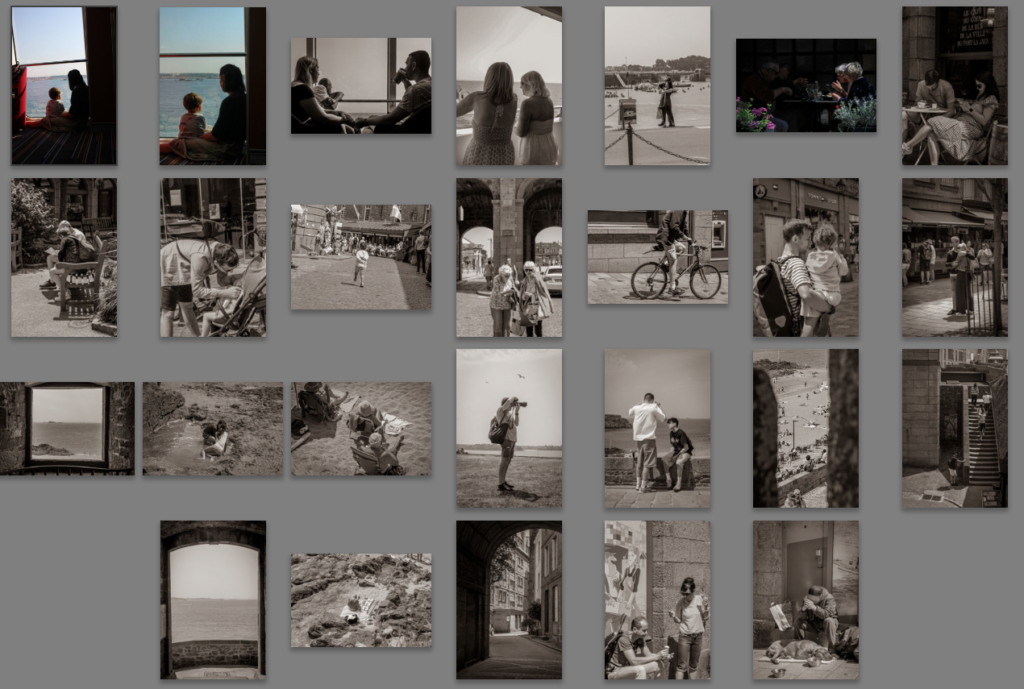
Editing

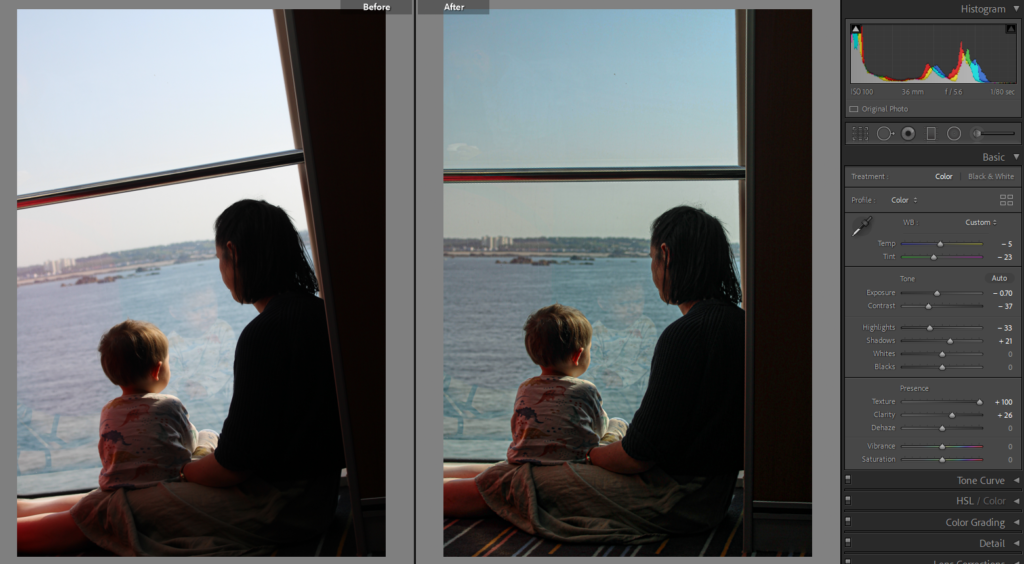
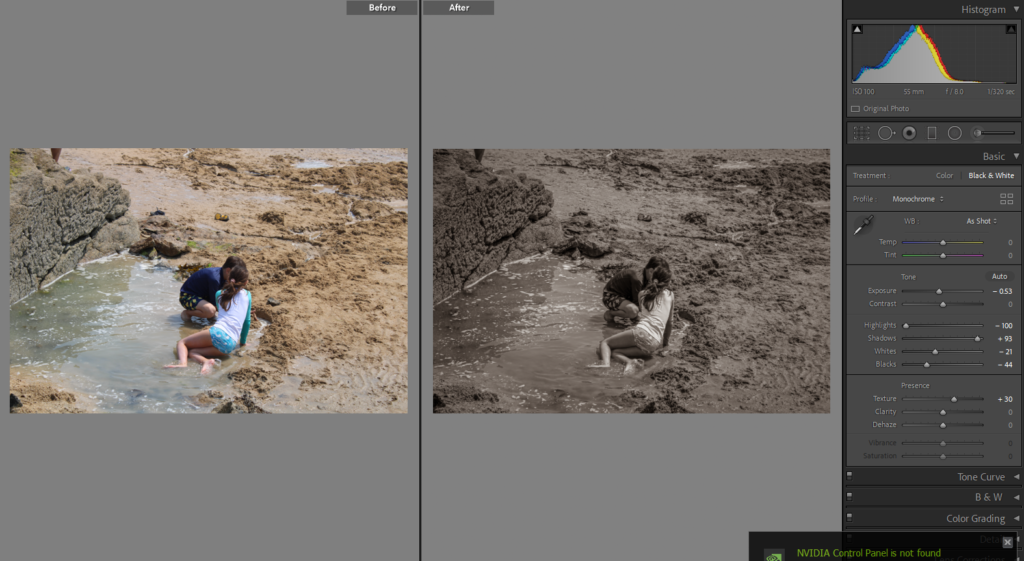
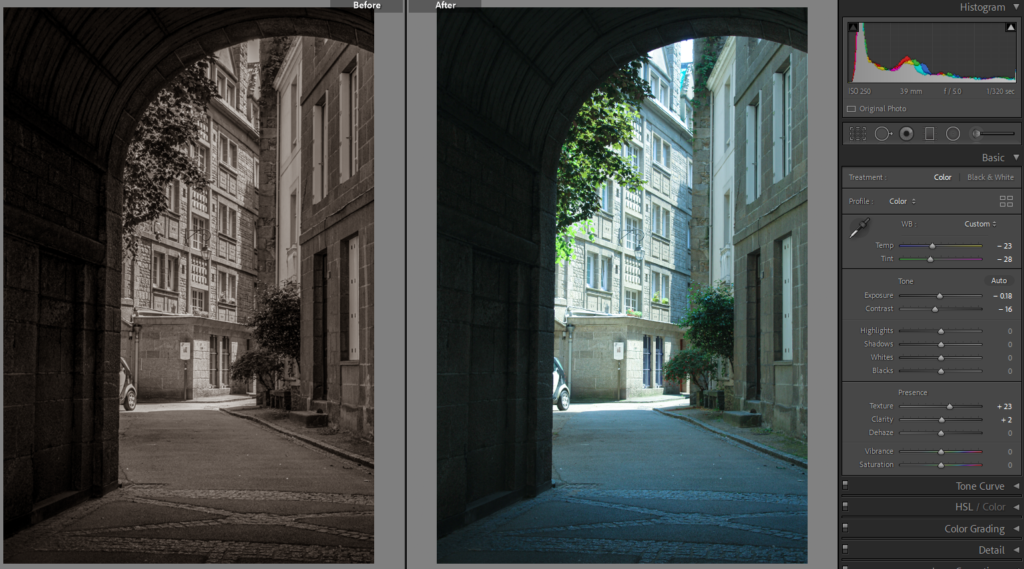

Final Images
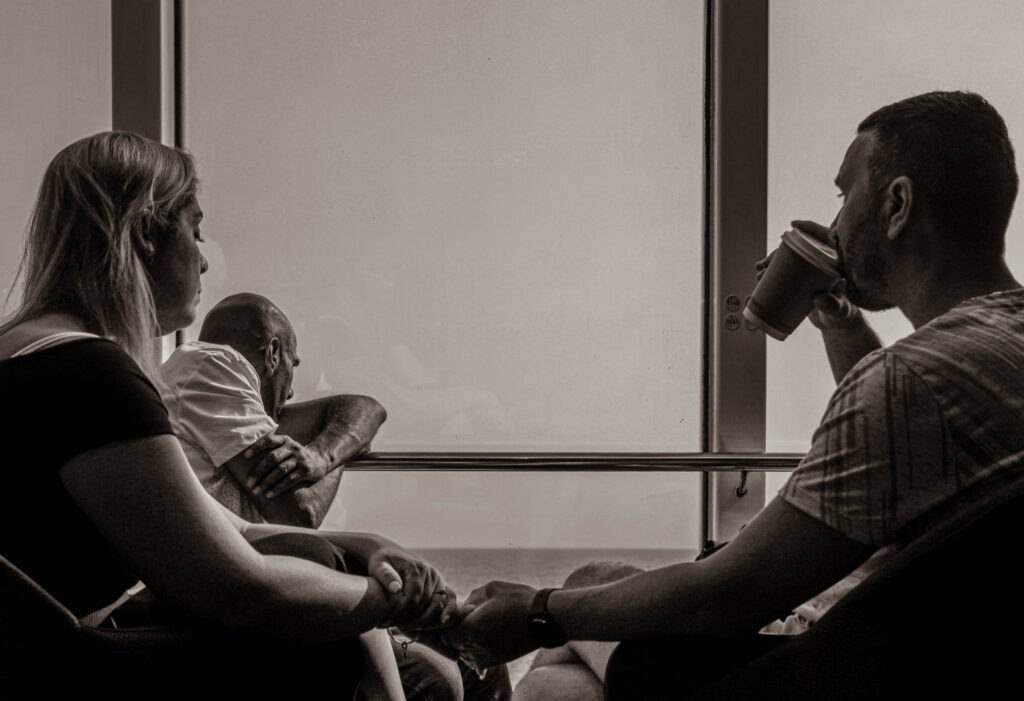
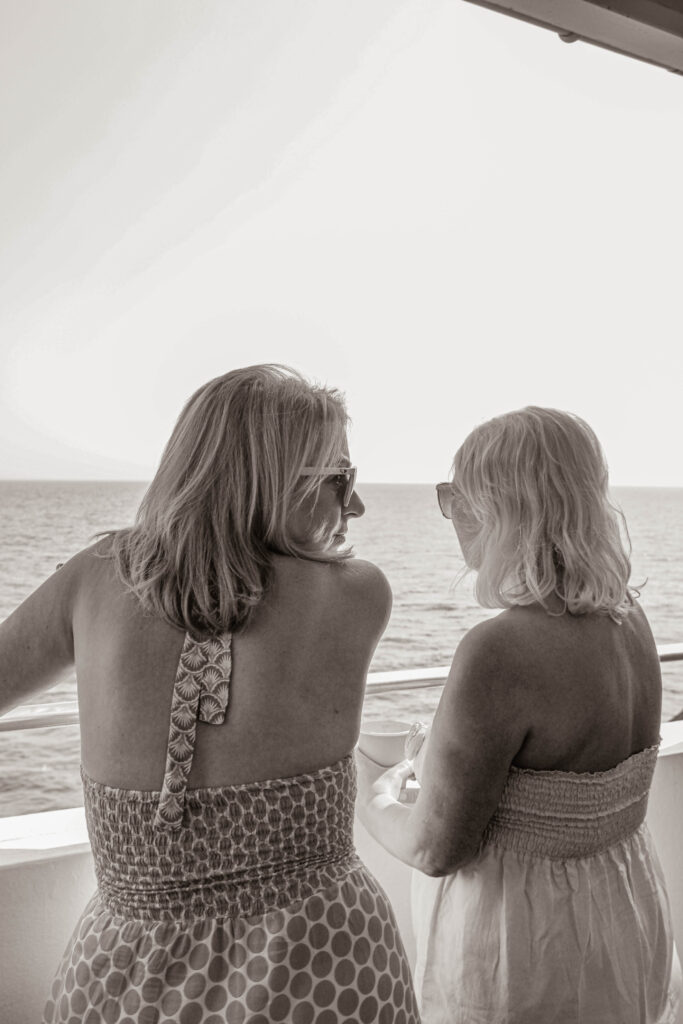
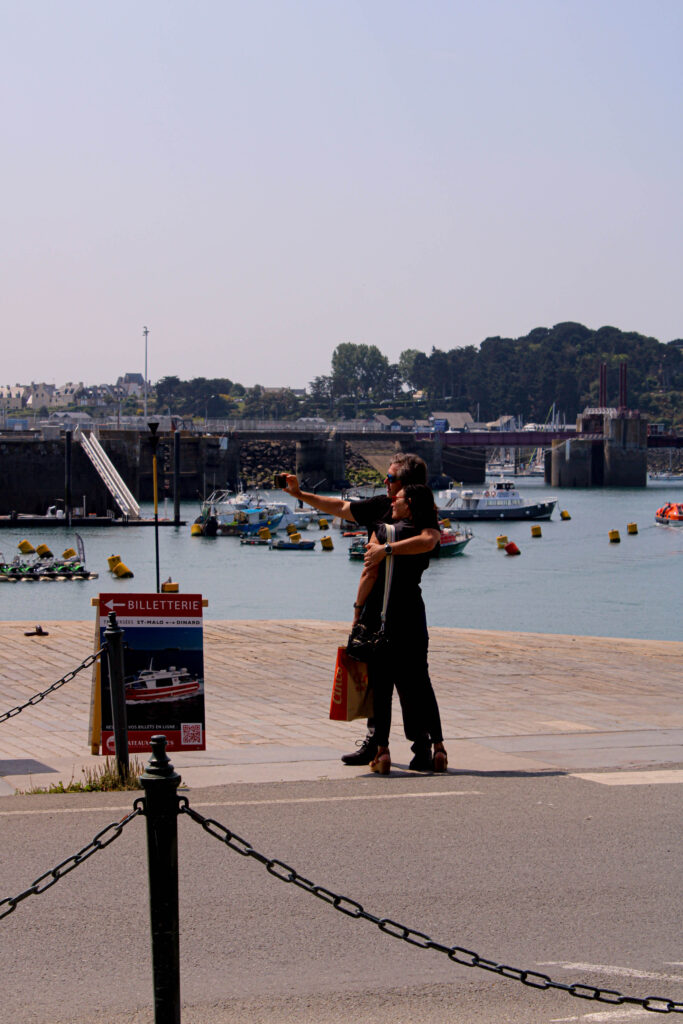

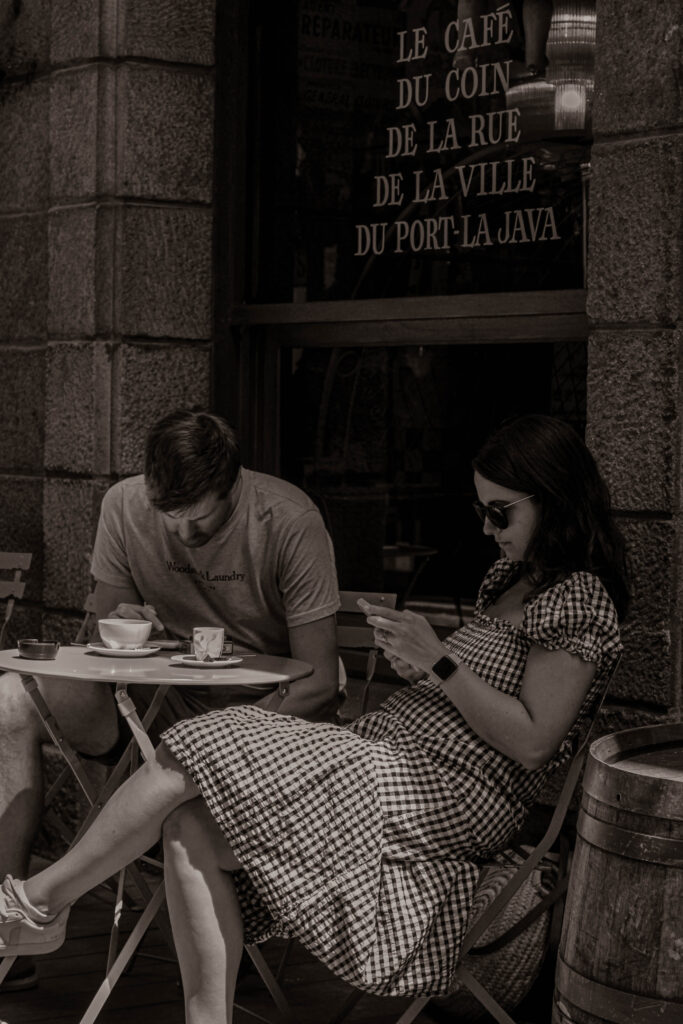
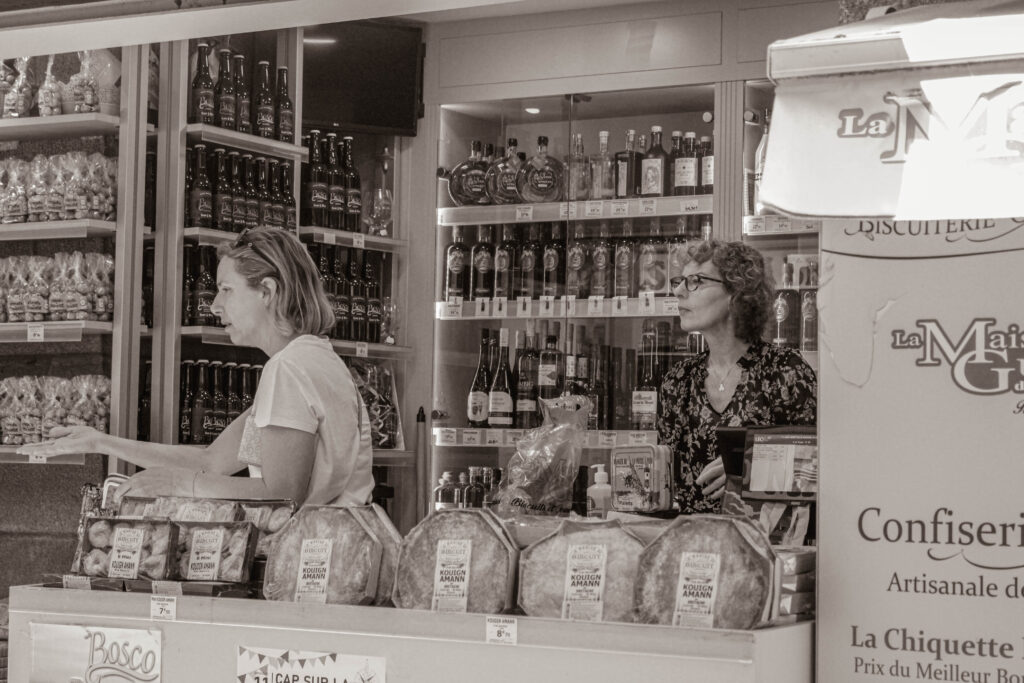
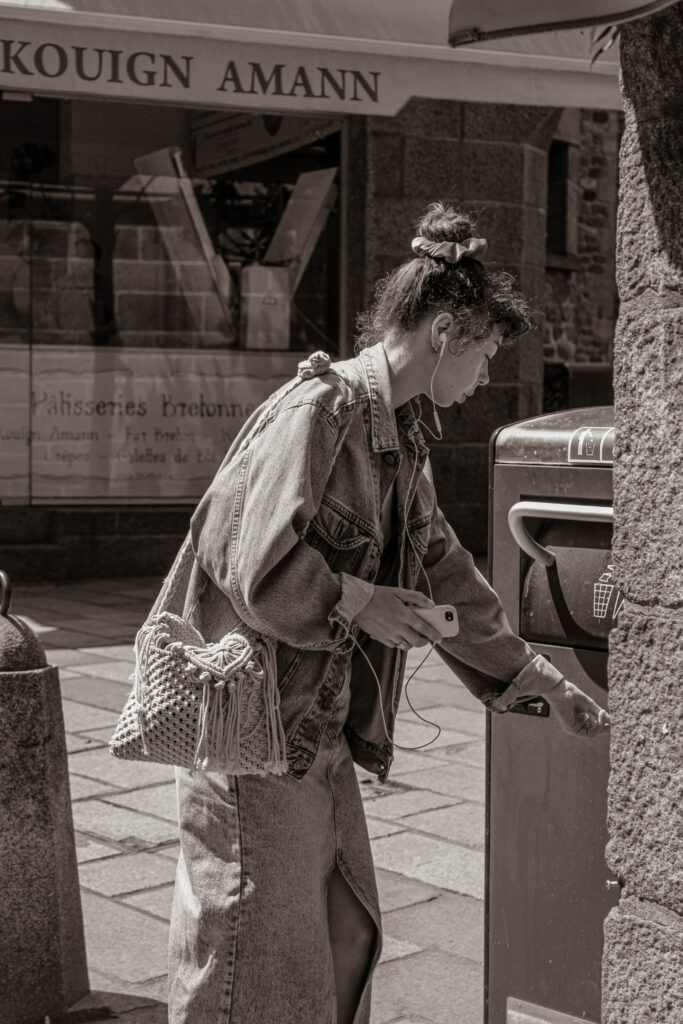

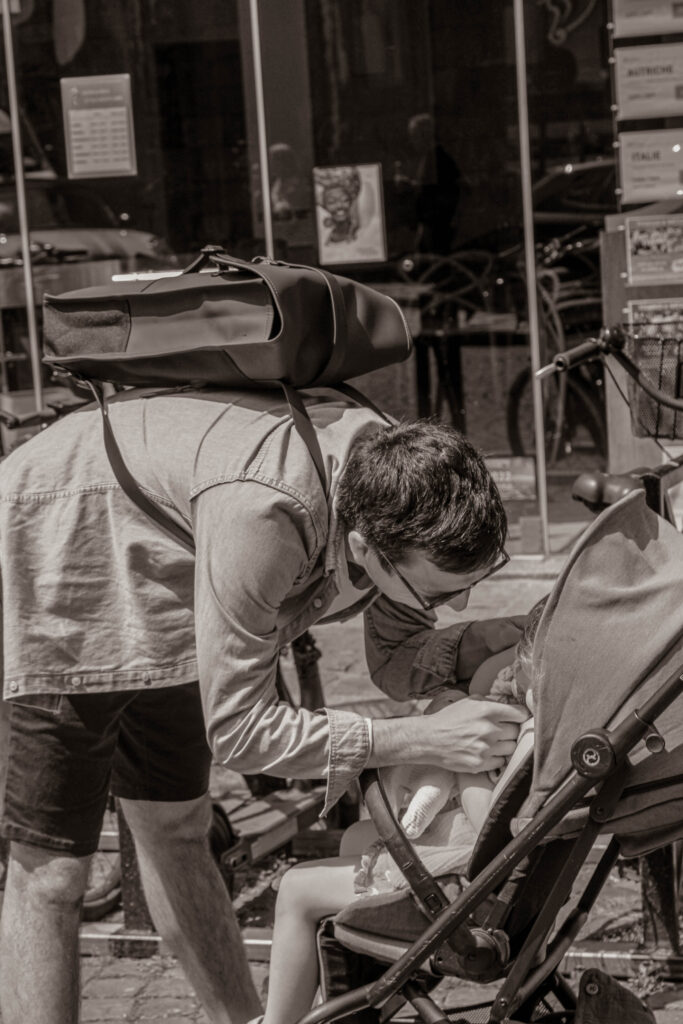
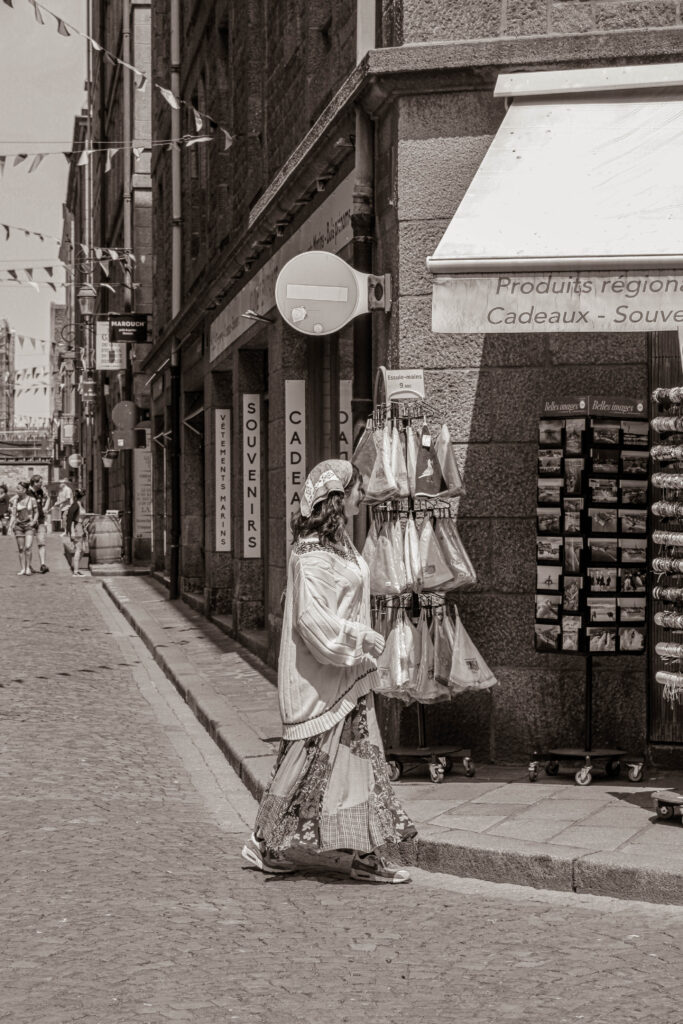
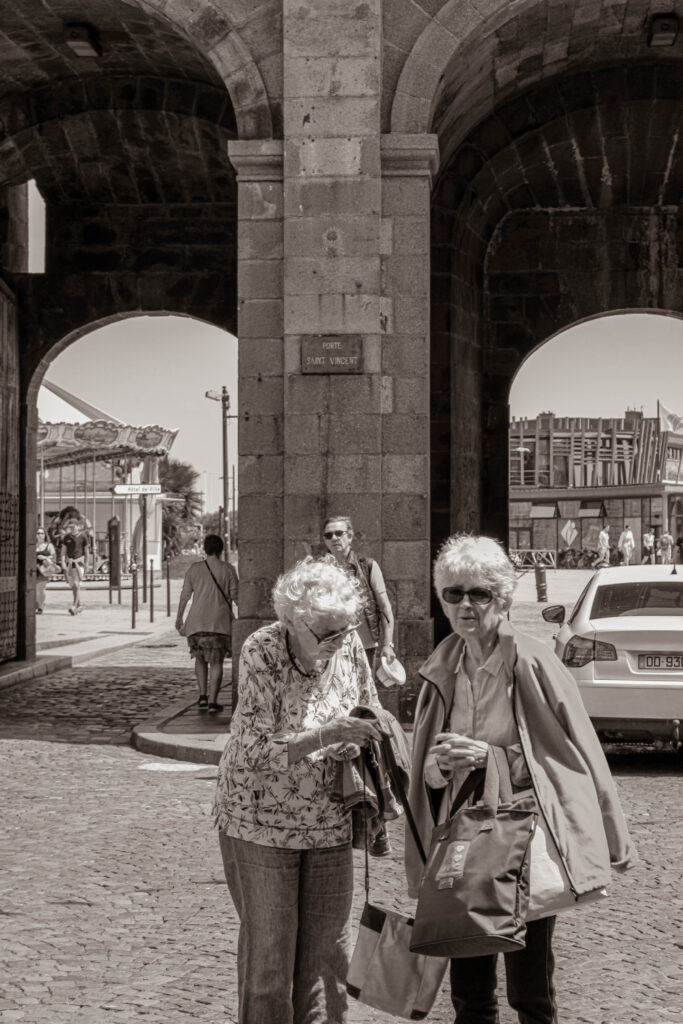
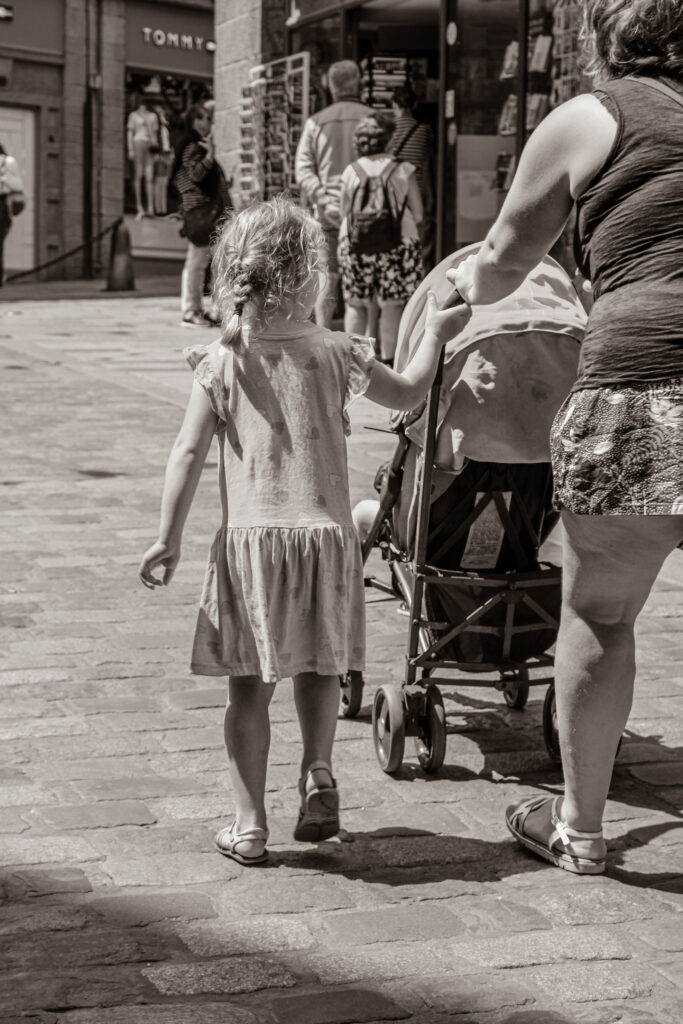


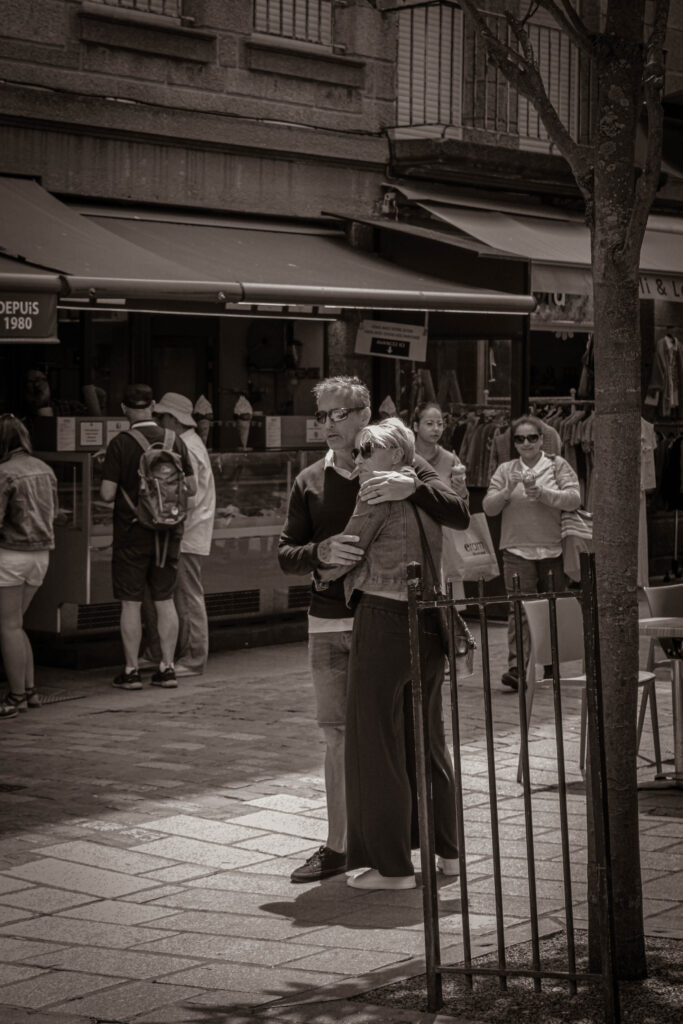
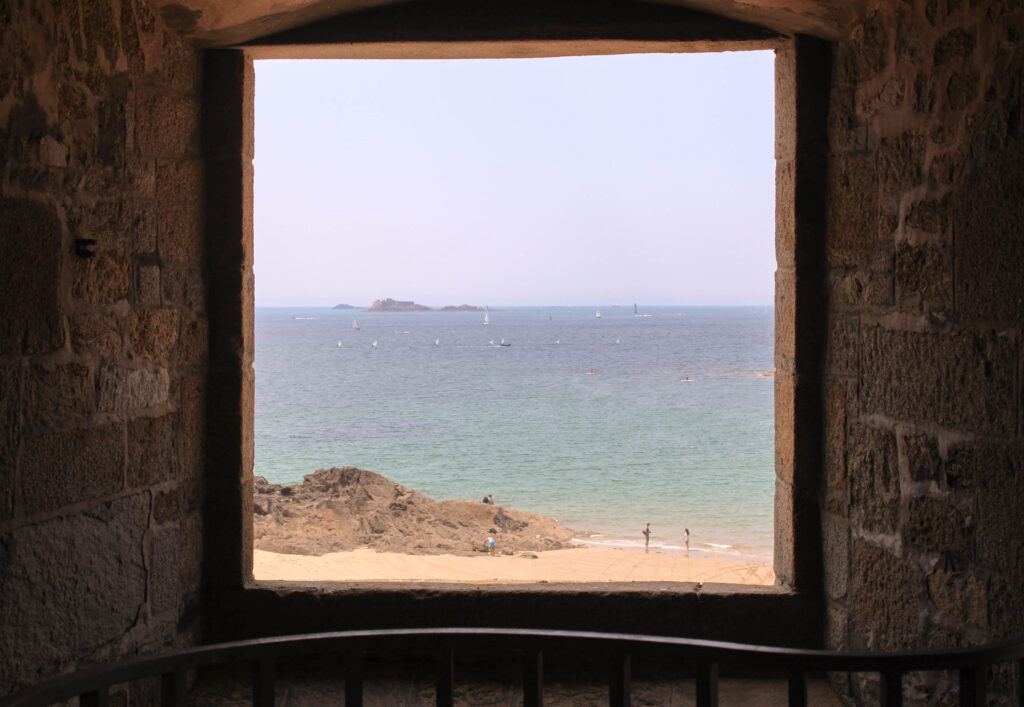
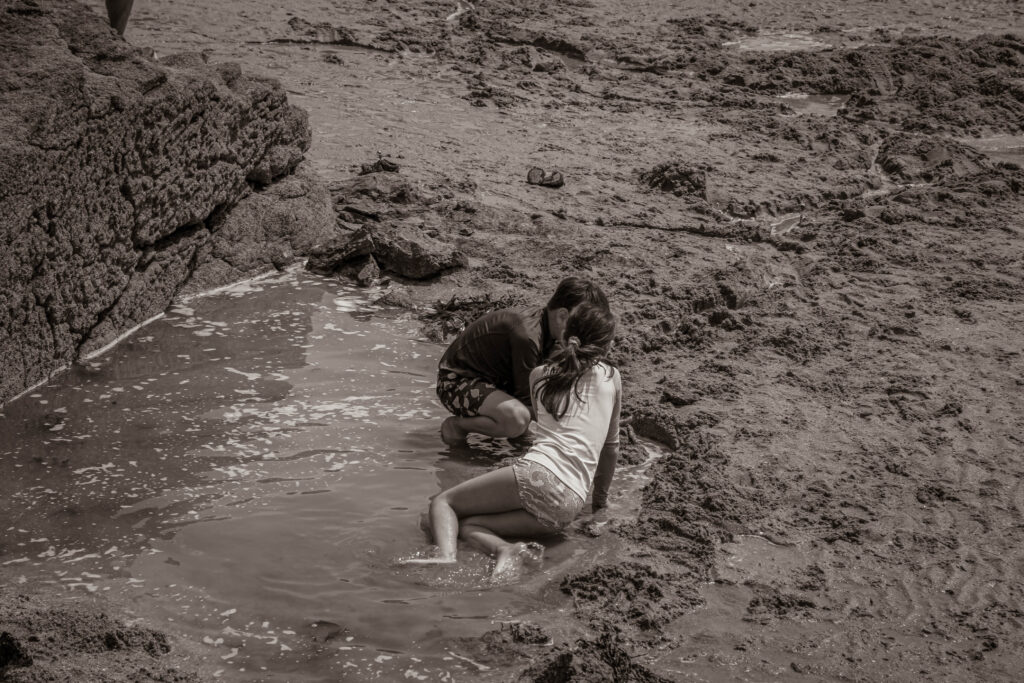

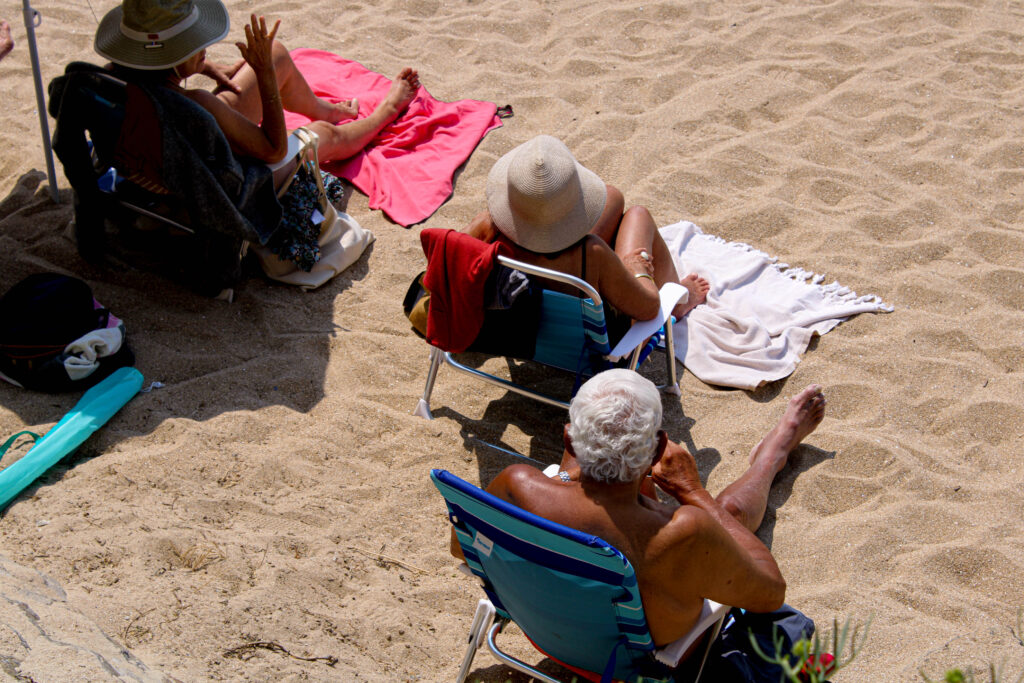
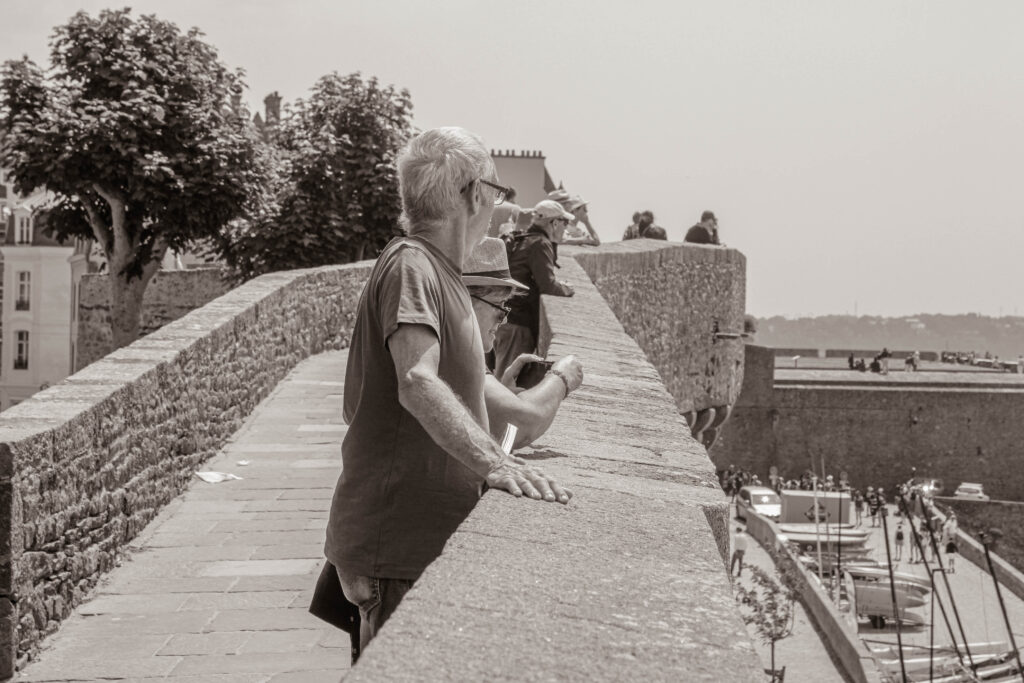
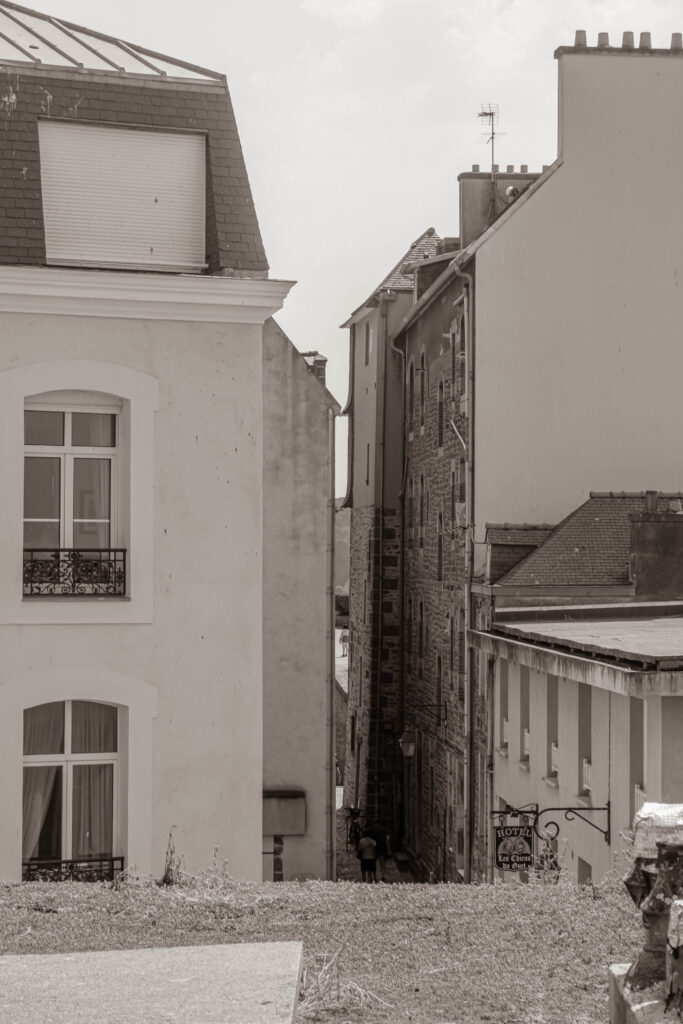
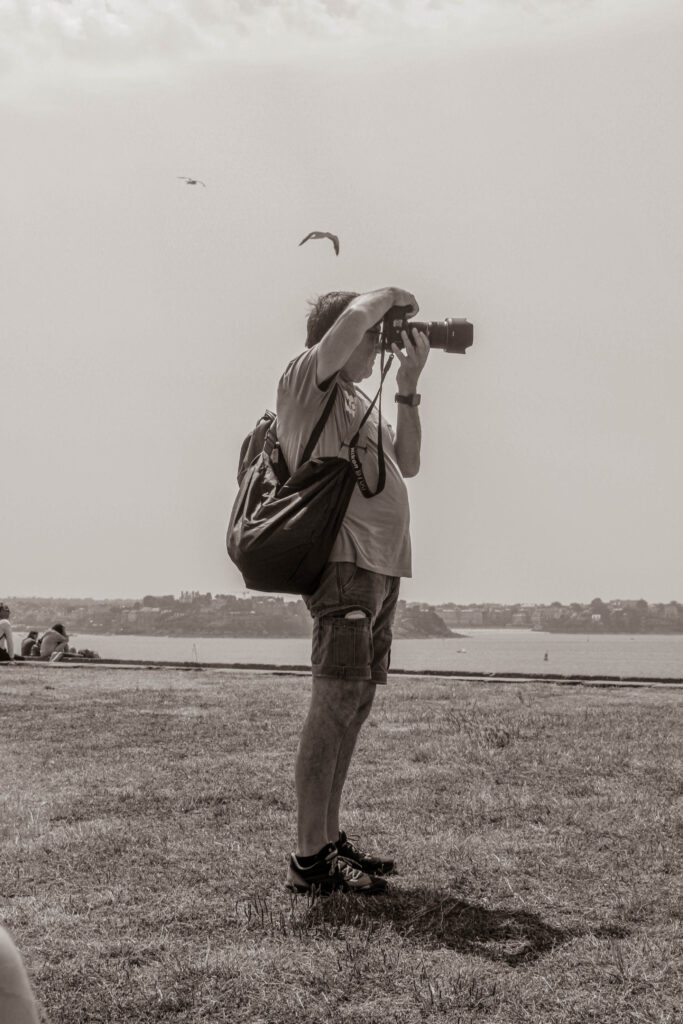


































I edited these images using photoshop Beta, the beta software allowed me to edit in objects into each photo while making it still look real. When placing a new object into an image, it also creates a shadow making it look very realistic.



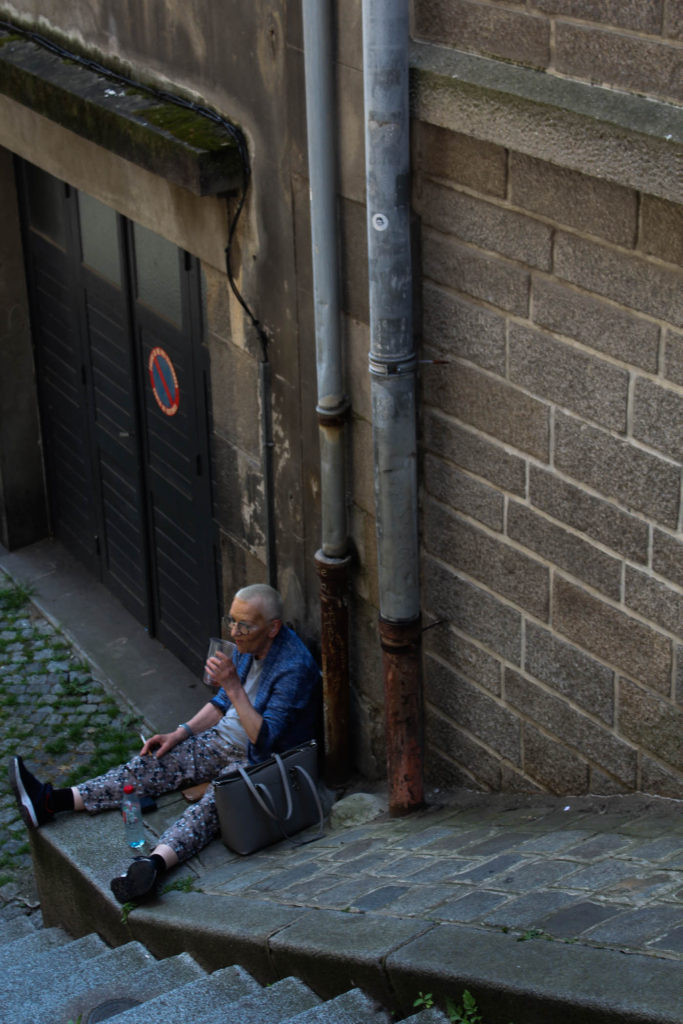
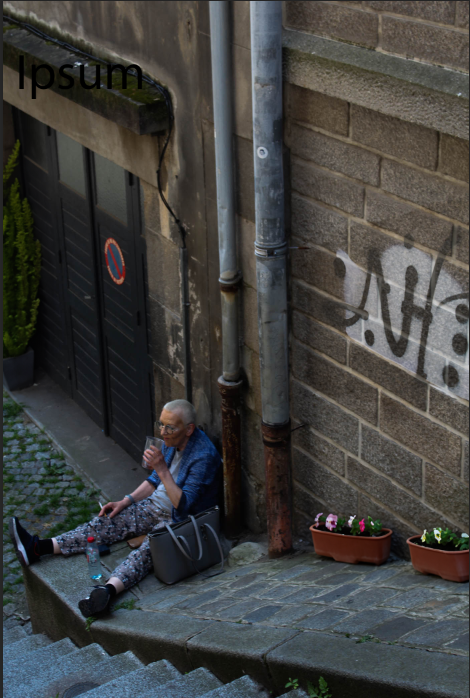


Photographic storytelling is the art of conveying stories, ideas and viewpoints through the medium of photography. It is a great example of how photography is not just the practice of creating visually interesting or stunning pictures, but is about telling stories, real or fantasised.
Typically photojournalists create photo stories to share their editorial or journalistic work. These standalone documentary photography pieces are a great tool to capture readers’ attention, especially in today’s visual world. They can also be used as evidence or visual art that supports any stories/ information the photographers have to share.
There are many magazines that produce picture stories, for example the LIFE magazine which was an American magazine published weekly from 1883 to 1972, as an intermittent “special” until 1978, and as a monthly from 1978 until 2000. On the website PictureCorrect, the magazine was said to be the only magazine which ‘has placed such fantastic emphasis on pure, honest, visual storytelling, and done it so well’. The LIFE magazine is said to have created images that provoke feelings of nostalgia when looking back at America’s ‘golden years’. I think LIFE is truly one of the best examples of photographic picture stories, presenting viewers with interesting photos with captions and descriptions that intrigued many.


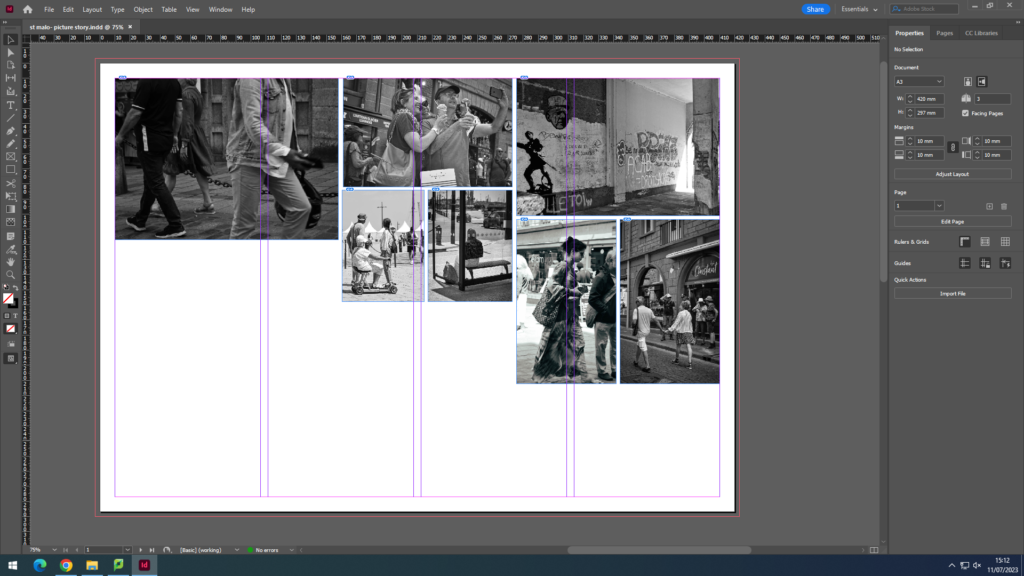
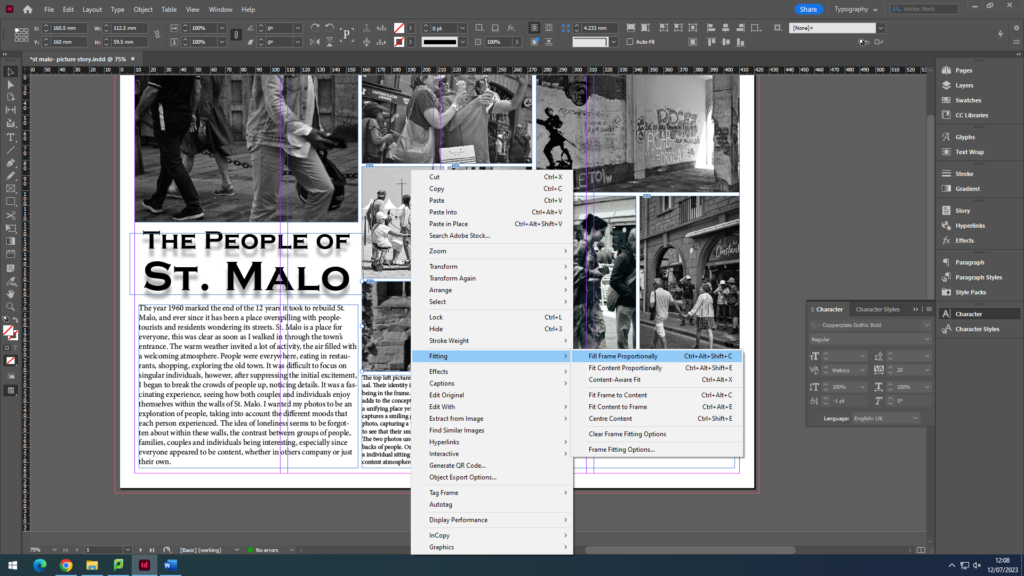
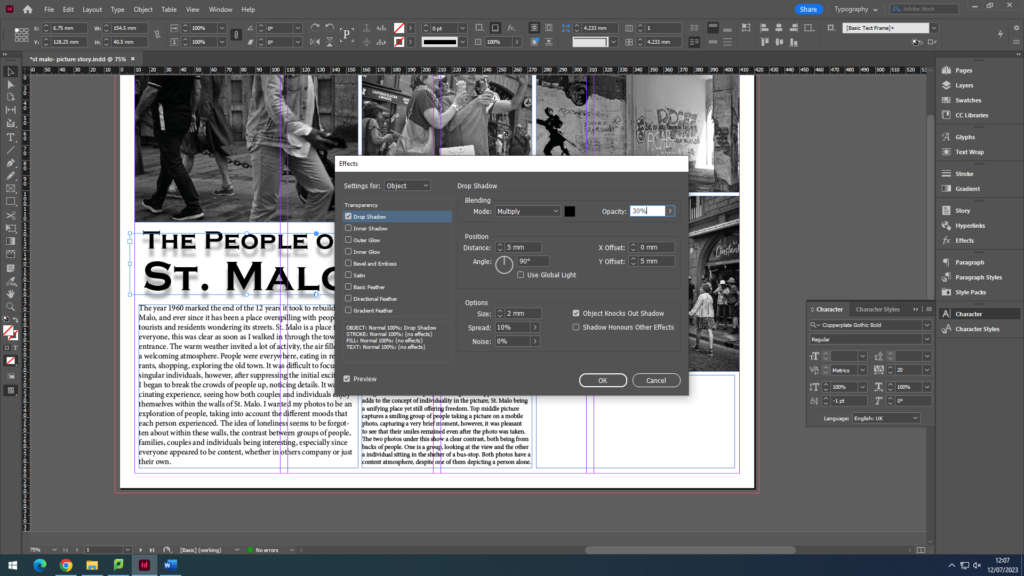
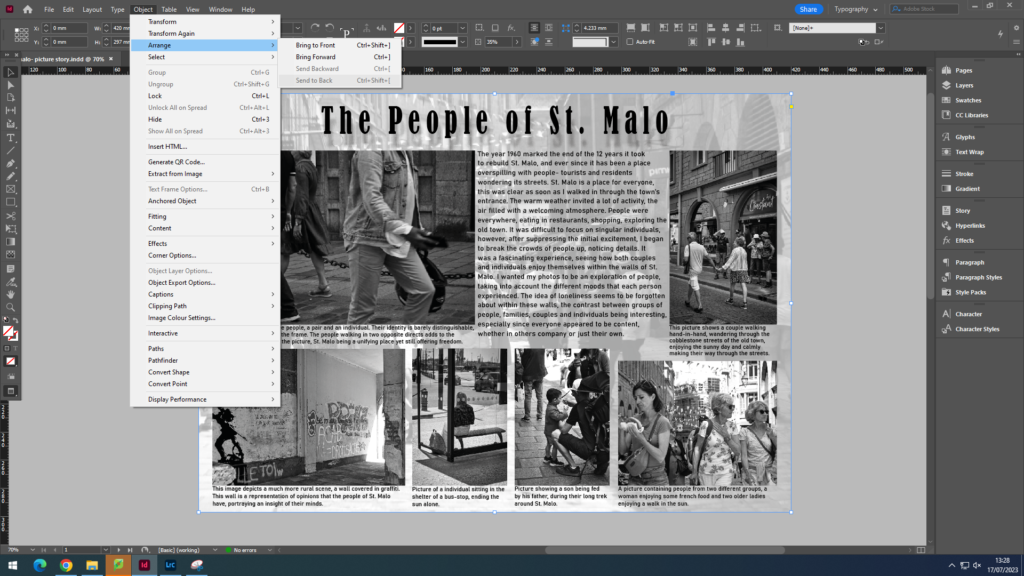
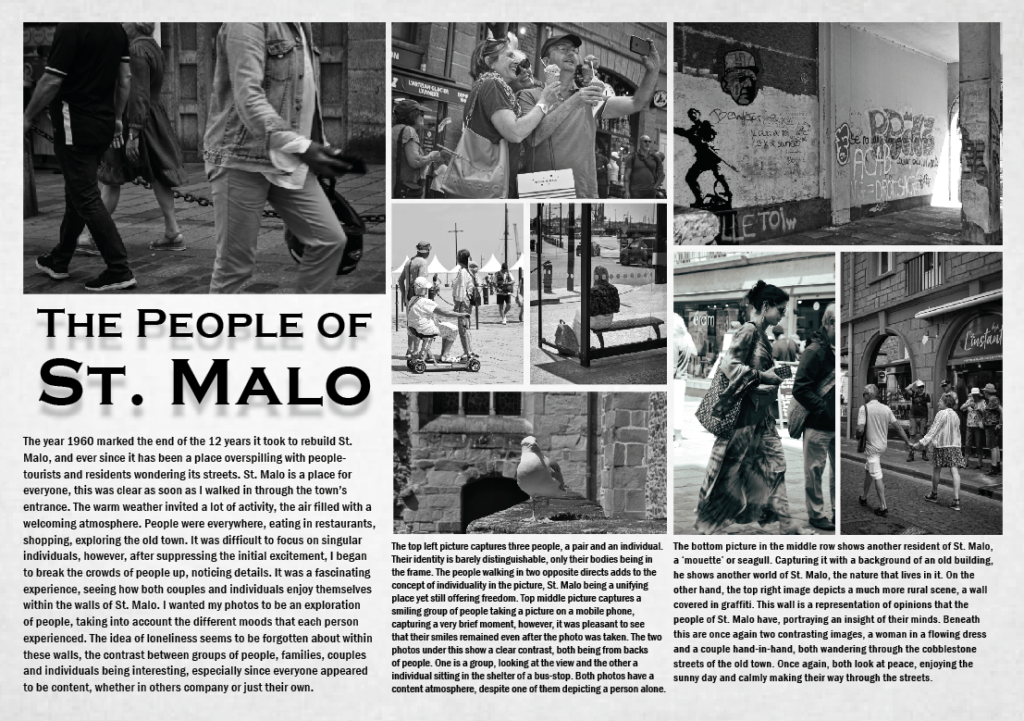

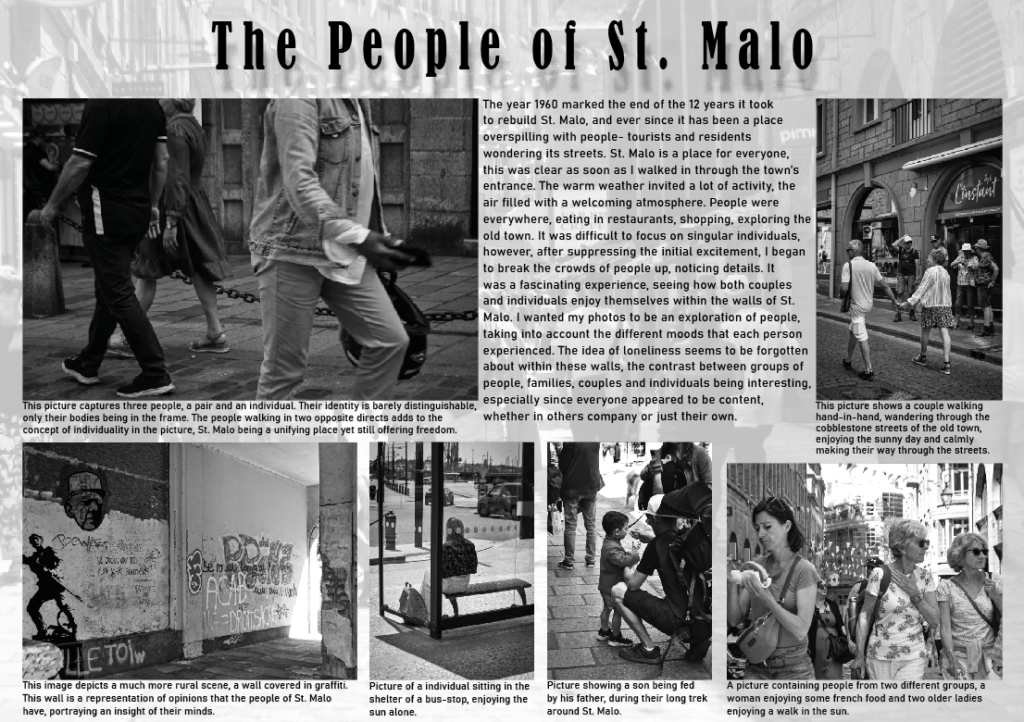
Using Adobe InDesign, we’re making A3 page spreads about our trip to St Malo.


Using the tool selected above, I make boxes for my images.
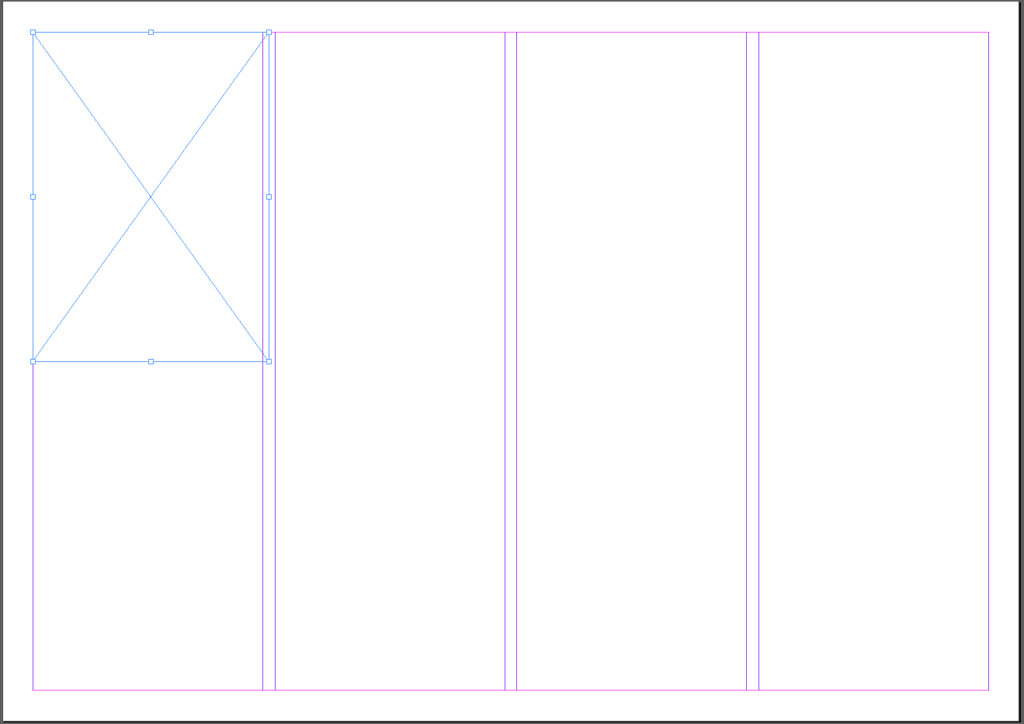
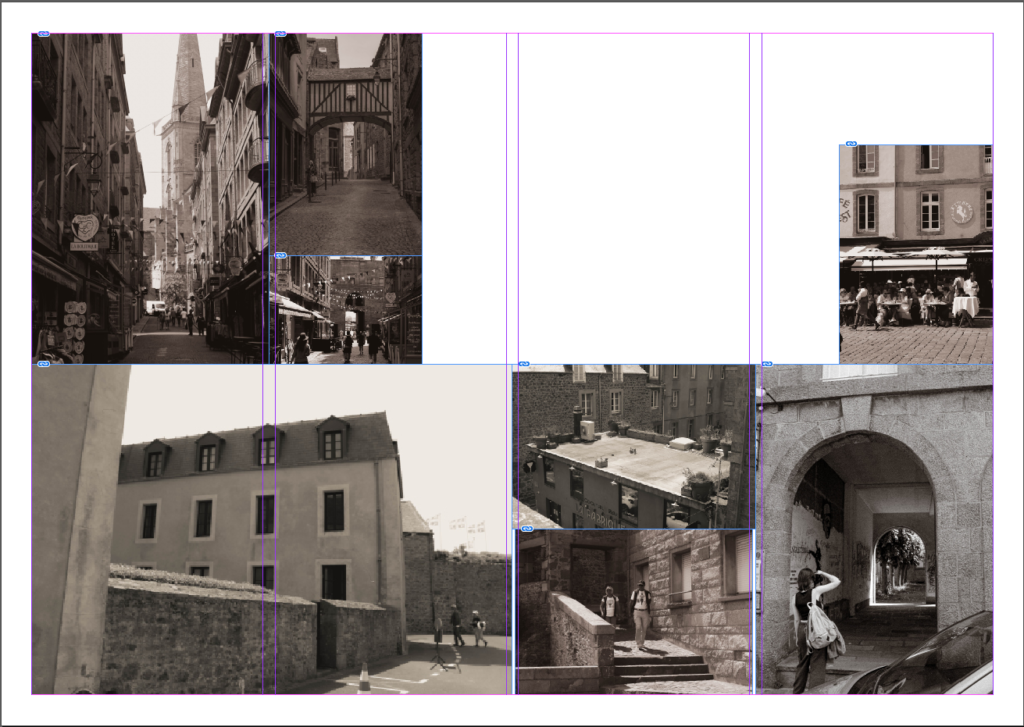
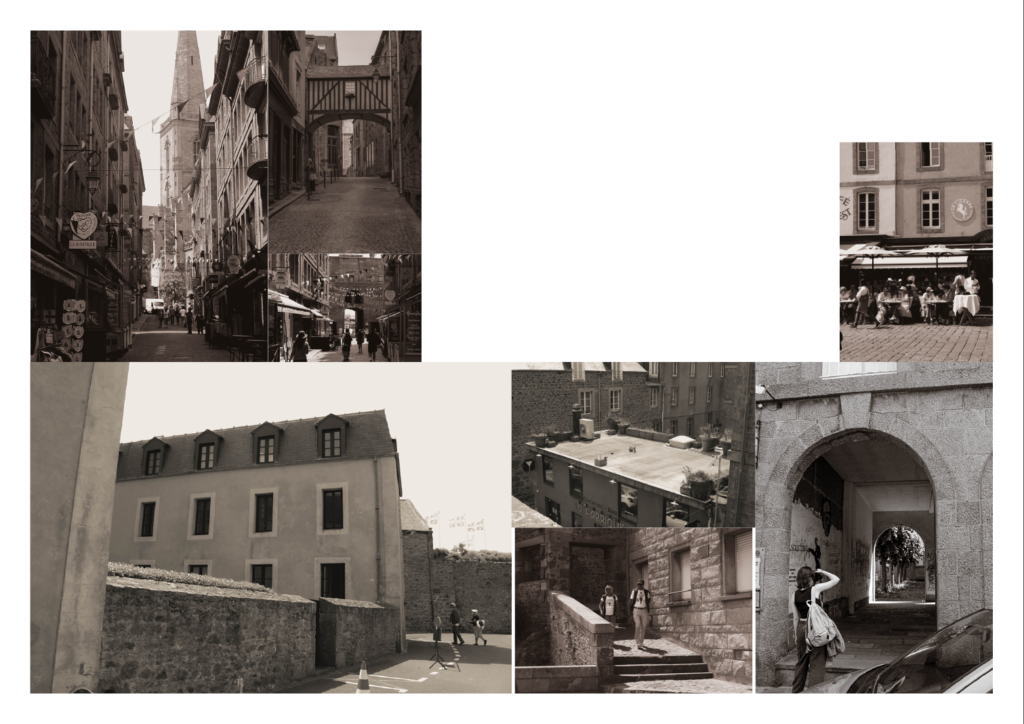
I then added the text, telling information about each image.
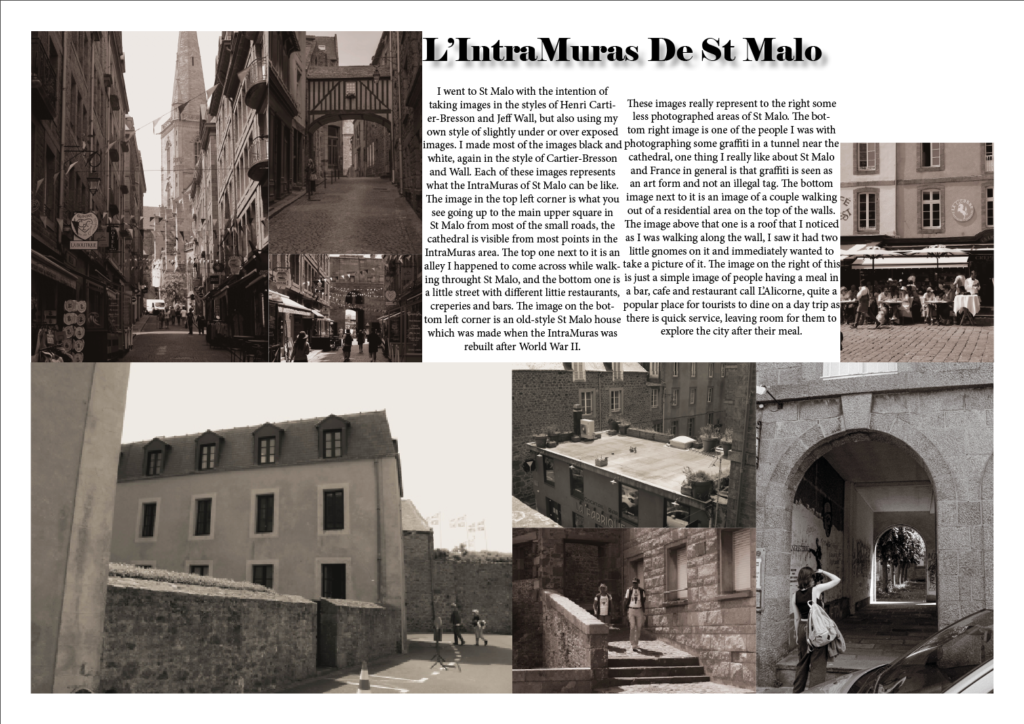
I’m thinking of taking some black and white photos of people in St. Malo, in the style of Matt Weber. My plan is to walk around the city and look for interesting subjects to photograph. I want to capture people with unique clothing, facial features, and expressions that tell a story. I also want to take candid shots of people in their everyday moments, like walking or sitting in a cafe.
To achieve the Matt Weber style, I’m planning to focus on the contrast between light and dark. I’ll experiment with different angles and perspectives to create a dynamic composition.
I’m really excited to see what kind of shots I can get in St. Malo. I think that the city has a lot of character, and I’m hoping to capture that in my photos.
As a former self-described ‘mediocre’ graffiti artist and taxi driver photographing the streets of New York since 1978, Matt Weber has explored countless miles throughout the city and seen a little bit of everything.
The subjects in his photographs range from fights to embraces, from the homeless to 5th Avenue, from Harlem to Coney Island. The sensibilities in his work portray a photographer who has always been in tune with the rhythms, the community, and the ideals of the true New York – both the good and the bad.
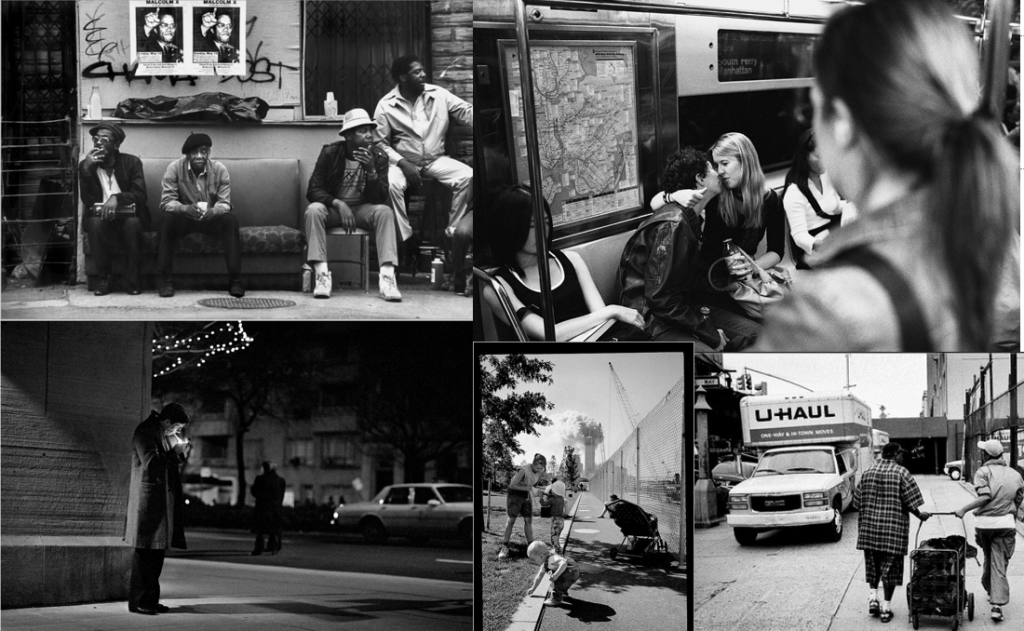
“the average person will not be able to know what is true anymore.” – Geoffrey Hinton.
INTRODUCTION
Photography was invented as a new technology in 1839. And it was viewed as a threat to traditional artforms such as painting and drawing and was not seen as art because it lacked “something beyond mere mechanism at the bottom of it.”. Photography is supposed to represent reality and is a real life perception of things, yet also an illusion as the photo’s framing, perspective, subject and composition are manipulated by the photographer. AI (Artificial Intelligence) is a tool that is relatively new. In this case, it is a tool that can be used to enhance, distort, bend, fracture and all together change how a photo looks. It can even create completely new images or things in an already existing image. AI has already developed enough to the stage where it has the ability to fabricate false images and videos, which can create confusion and make people think differently about a certain topic. It is likely most of us have seen an AI generated/altered image or video and have even believed whatever it was, as interesting as it is dangerous. On the idea of AI being dangerous, Geoffrey Hinton, mostly referred to as the “Godfather of AI” resigned from his position at Google to bring awareness to the rise of AI and how it can have many potential dangers. He said in an interview; “Right now, they’re not more intelligent than us, as far as I can tell. But I think they soon may be.”. He worries that AI can become too unpredictable and can eventually start to cause harm.
PHOTOGRAPHY IN THE PAST
Photography in the past, before the digital age, had artists use ways of manipulating the photos. Both with the camera and in the darkroom. Many artists would put Vaseline on their camera lenses, put chemicals on prints in a darkroom and would also scratch negatives together, artists would even move things seen in the photo to make them look more interesting. All these methods were used by artists to make their photos look more like an actual art piece, this was called “Pictorialism”.
An example image from this era:

This is a photo called “The Valley of the Shadow of Death”, it is known as “the first iconic photograph of war”. It was taken by Roger Fenton in 1855 in Crimea during the Crimean War, the photo shows a valley there with lots of used cannonballs. It was called “The Valley of the Shadow of Death” because that valley had constant shelling there. It was later theorised that Roger Fenton had the cannonballs put on the road for the photo, thus creating an unrealistic perception of the event. But many people have combatted this allegation by saying it wasn’t fabricated at all, the Orsay Museum said “this is unlikely as the fighting raging around him would probably not have allowed him to do so”. Some people have also claimed that the cannonballs were put there from soldiers who were collecting them for reuse, and had put them there for the time being. I think personally that the cannonballs were intentionally placed there by Fenton, not to exactly lie to the viewer but to instead emphasize to the viewer about the dangers of war and to make the photo more serious and look more convincing. But people when they found out about the cannonballs being placed there jumped to conclusions and accused him of lying. When he really wasn’t trying to. To this day, it is unknown whether he staged the photo or not, and there have been many theories and claims supporting if he did or not. But no one really knows and no one will.
PHOTOGRAPHY IN THE PRESENT
Photography now since the digital age still alters the truth, and it’s never been easier now that we have things such as AI and Photoshop:

This is a “photo” called “The Electrician”, made by Boris Eldagsen in 2022. The photo shows a 40’s looking portrait of two women. This photo is from a series called “pseudomnesia” which is Latin for “fake memory”. The photos in this series are about “fake memories of the past, that never existed, that no one photographed”. The photo was going to win an award at the 2023 Sony World Photography event but the award was turned down by Eldagsen himself and he then revealed that the photo was actually AI generated. He used AI generators such as Midjourney and DALL E 2 to create the image. Which means anyone can use these platforms too as they are mostly free and are easily accessible, this could potentially bring dangers to our society as there are no regulations currently set for using AI generation and it only takes one image or video of a fabricated situation to cause bad things to happen. AI has increased our ability to create new images that has no relationship with either photography or the truth which can be very bad. Boris Eldagsen however, despite declining his award, believes that AI “isn’t a threat” and that it is used to “liberate artists”. I personally think that it’s a little scary the fact that AI has become so convincing that it can be passed as legit through checks made by actual staff at award events. But Eldagsen clearly wasn’t trying to fool anyone and was simply wanting to use his AI to make his album, it wasn’t his fault that it won an award and the fact that he turned it down only further proves that he wasn’t trying to “cheat” to win.
CONCLUSION
Photography in the past, when altering an image, was much harder to do as there wasn’t much technology or tools to help do it, but at the same time it seemed a lot more fun and interesting as you had to actually interact with the environment and actually think more about what you want to do. It also seemed mostly harmless as you couldn’t really achieve much with faking a photo and conveying any lies. Modern age however, it is much easier as we have AI and other things like photoshop to alter and create images, being much easier and quicker. You don’t have to involve yourself with changing things in the actual place when you’re taking the picture – if you’re even taking an actual picture that is, which I’m not a fan of particularly. I also don’t like how easy and accessible it is too, anyone can make a fake image or video, which is good but can be very scary when you think about what things they can make and make people think, it will also just be a nuisance to deal with as rumours and theories about controversies and situations etc. are already annoying enough to deal with. And the fact that you could even win awards by making fake photographs is very unfair for other people who took actual photos, why take the time to go out and make a real photo when someone else sat at their desk can make an award winning photo with just a few clicks? The future of photography is unclear and undecidable given the potential with these new tools, one day we might not even need cameras because we’ll be able to make our own photos with an app or software.
Bibliography:
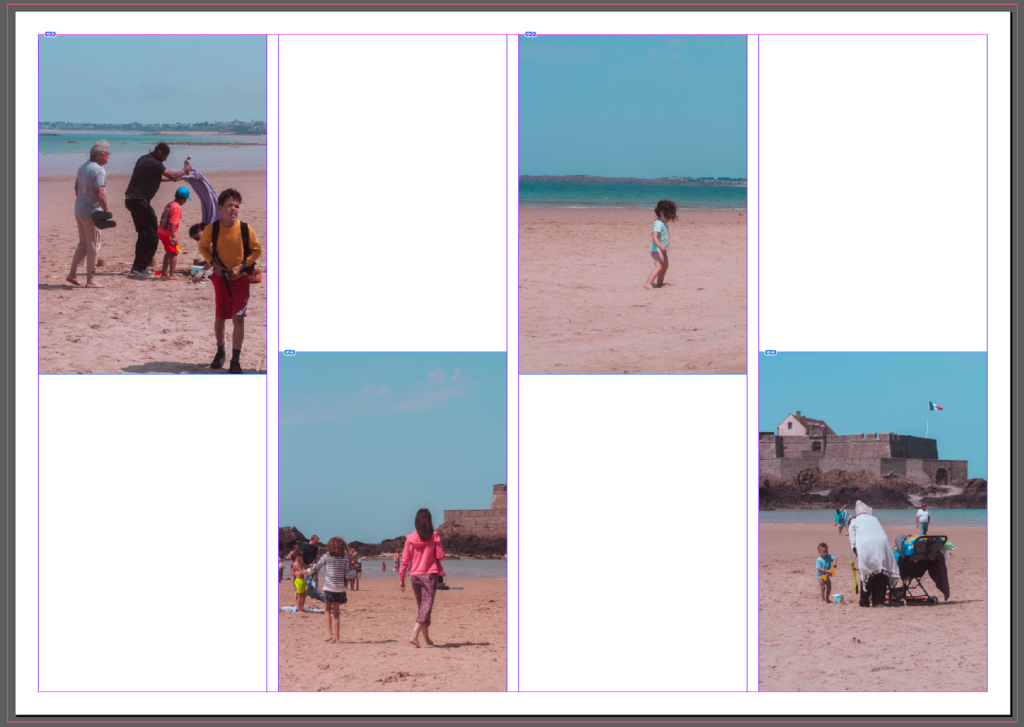
Using Adobe InDesign, we learned how to set up a double-page spread using various tools on the program. With a few of my edited images taken in St. Malo, I attempted to organise them into different layouts to create a composition that I was happy with, and that, with added text, would make for an excellent descriptive piece on the Grand Plage – the beach outside St. Malo.
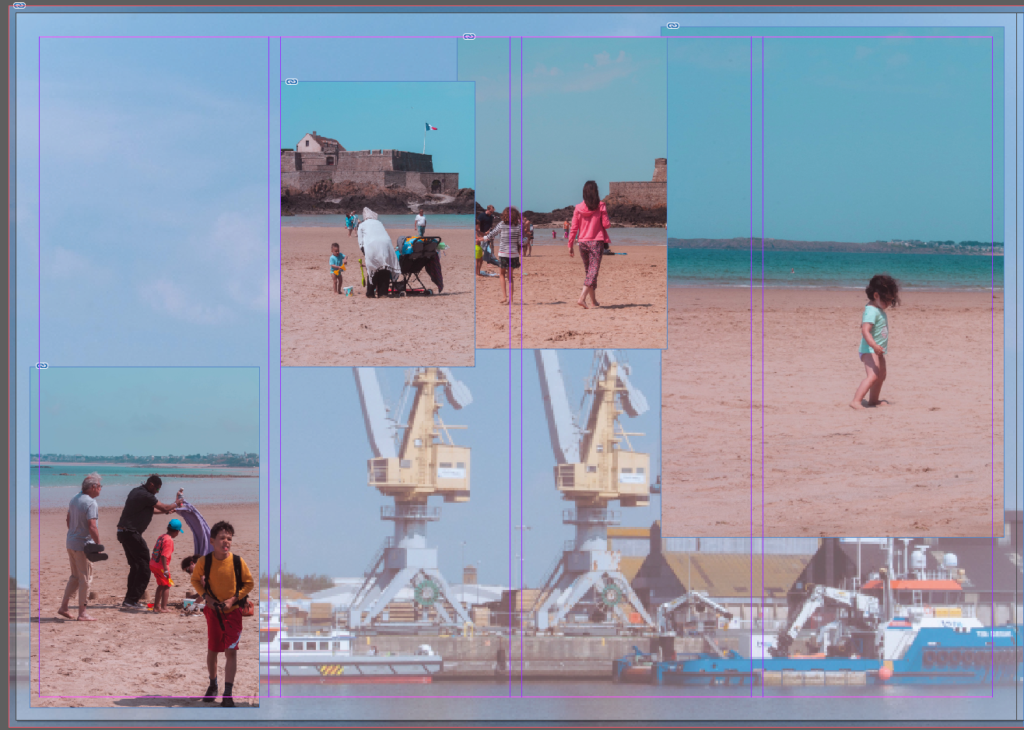
I played around with the organisation of the photos until I found one I liked, and experimented with using another image of mine as the background – lowering the opacity to bring more focus to other media on the spread.
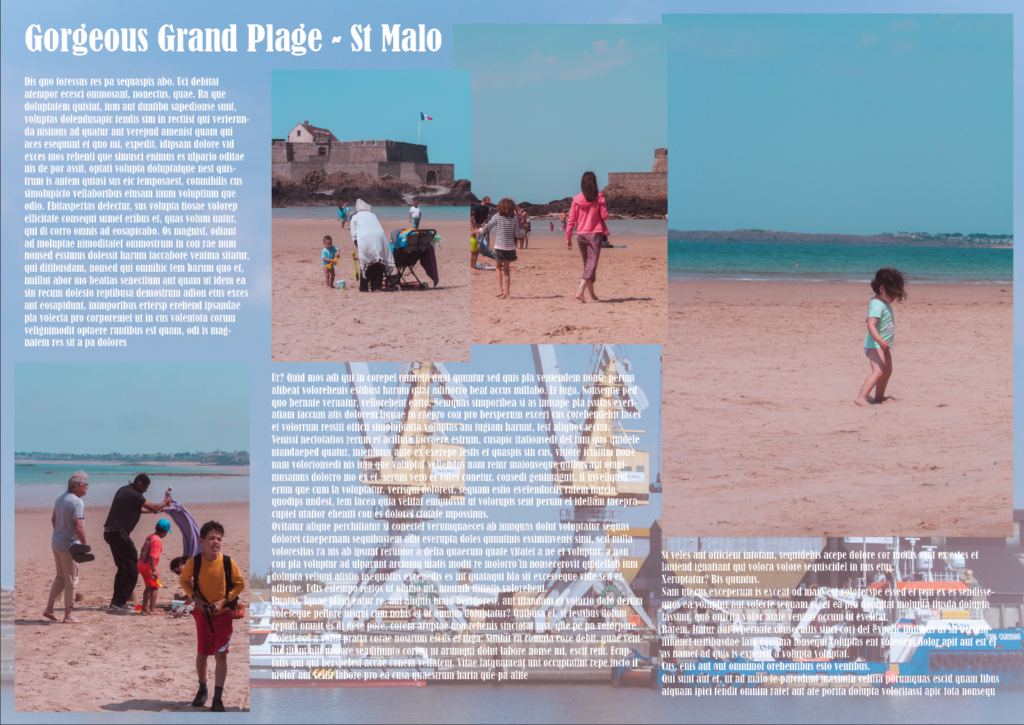
After coming up with the title Gorgeous Grand Plage for the double-page spread, I added some placeholder text to see how it would look with a description. We then printed our spreads off and peer-assessed each other as a class.
I’m proud of the spread I put together in the short time that I had, but I think I could develop this further using different layouts and experimenting with more tools in InDesign.
street photography is genre of photography that records everyday life in a public place. This is often a form of photography which links with portraiture as the photographer is able to take candid photographs of people, without them knowing. it is also a form of documentary-style photography that captures scenes in public places, often without prompting or posing from the subjects. It’s about capturing people and their surroundings, creating meaningful images that tell stories.
There is another variation of street photography which is more under the name of urban photography, which could be photographs of the street itself but there aren’t any people in there, or people are not the main focus in the photograph.
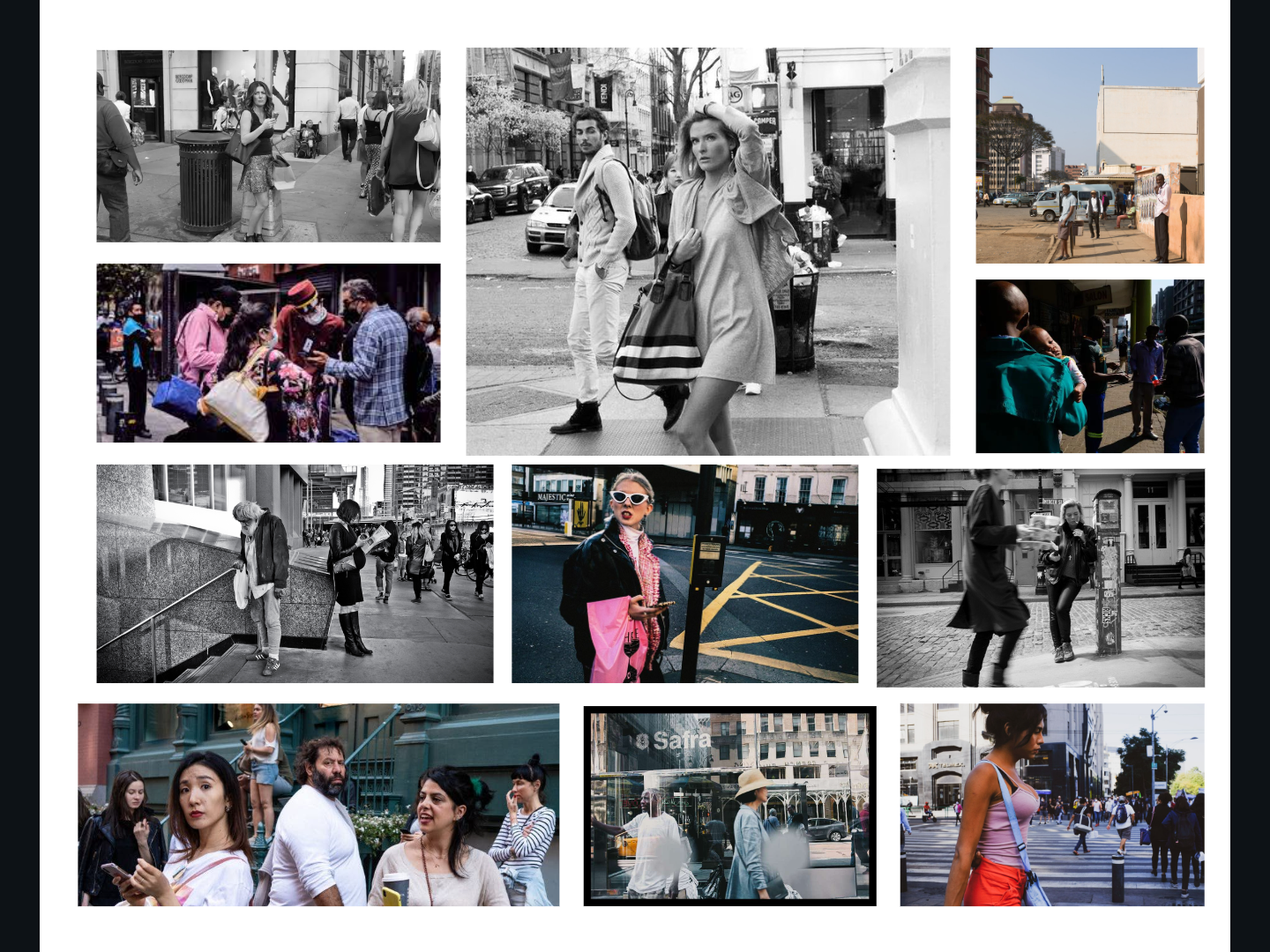


Who- people on the streets of St Malo, especially people that show a connection between each other. Meaning people that represent human relationships.
What- as I am going to be focusing on street photography, the objects that I will usually capture are going to be buildings, shops, street signs and elements like bins, benches and plants.
Where- on the streets of St Malo but mainly within the old town region, as it is close to the beach, some photographs may feature that location
When- the trip is supposed to be taken out on the 14th June 2023, between mid-day and early evening. this means we would have around 5-6 hours. This means the times the photographs will be taken is going to enable the photographs to turn out the best due to the high contrast between natural light and shadows between those times.
How- as I am going to be capturing people that are moving quite quickly, I will need to use shutter speed mode and keep a closer attention to the shutter speed as well as a high aperture because it is going to be bright. in order to not have the photographs blurred I will need to ensure that the shutter speed is roughly around around the speed of 1/250sec and 1/500sec. I want to achieve high contrast in my images and sharp detail.
Why- to develop a higher skill set when it comes to capturing people that are unaware of the photograph being taken of them, in other words I will practice my street photography skills and get outside of my comfort zone when it comes to taking photographs of strangers. I think St Malo is a great place to that as most of the people there will not recognise me whereas if I were to complete this in Jersey there is more of a likelihood that I could come across someone I know.

As a group, we travelled to St. Malo to test our abilities using Cartier-Bresson’s “decisive moment” technique, taking part in live street photography throughout the town for the day.



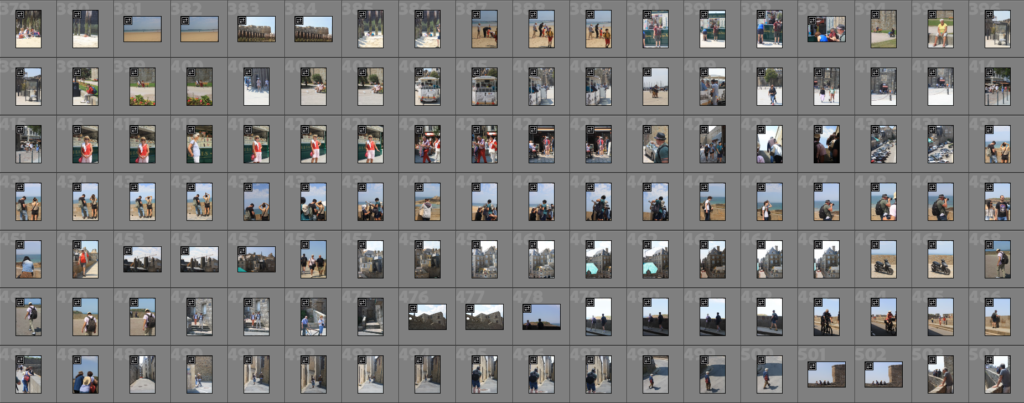


I ended up taking hundreds of images over the 5 or so hours we spent there, covering different areas such as the castle walls, the restaurants, and narrow alleyways, most of which captured the bustling community at St. Malo at its peak.


Once I’d sorted through the larger half of the photos, I gave my best-unedited photographs a star rating on Lightroom Classic, only keeping the highest-rated images for editing.
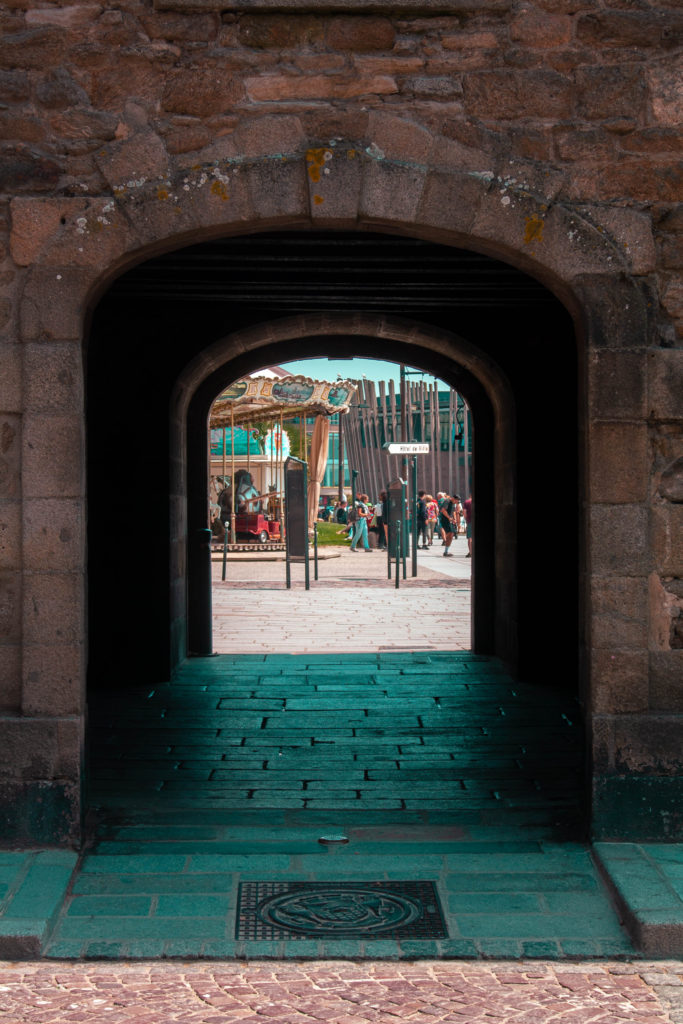
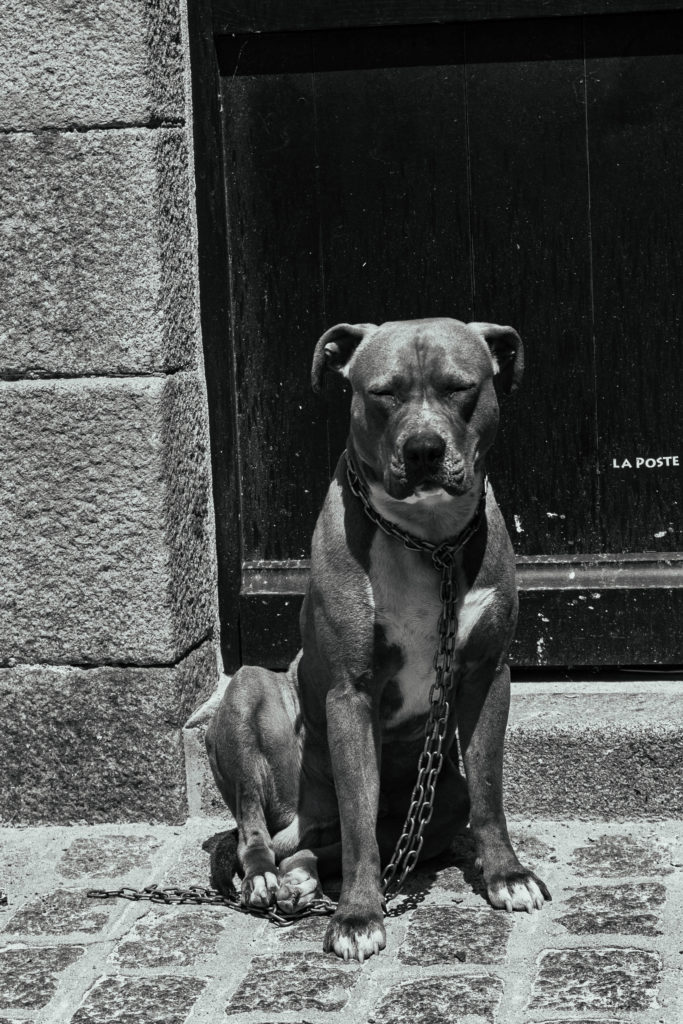
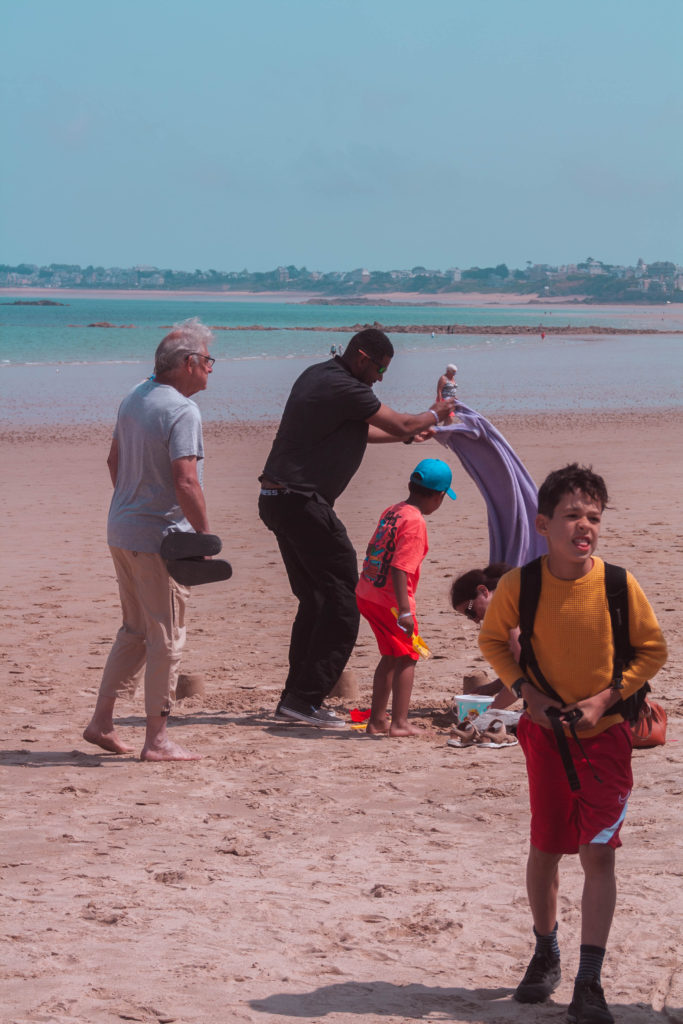






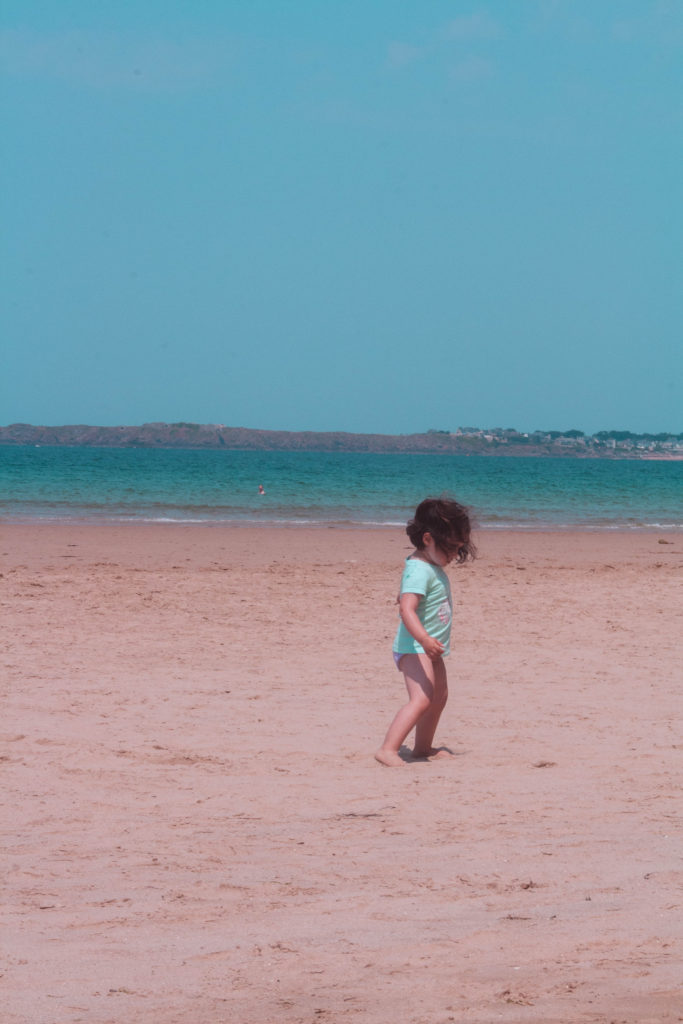


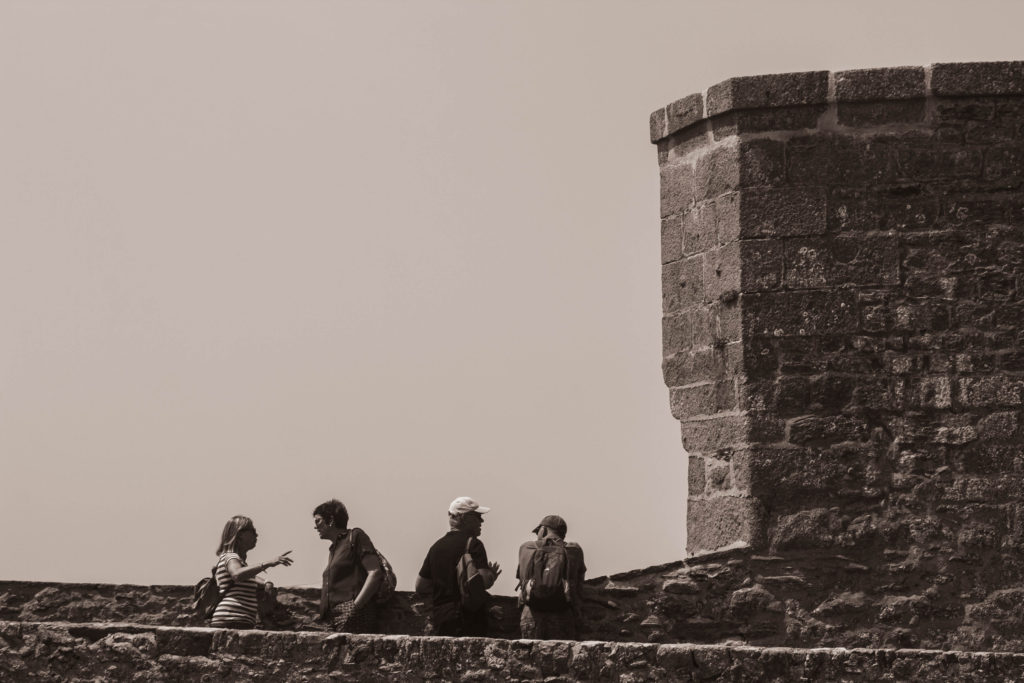

After editing a small portion of the photographs, I was already left with a wide range of compositions that a few I believe capture the concept of the “decisive moment” perfectly, and imitate Cartier-Bresson’s style. I think this trip was a great opportunity to take a large amount of images that I’m definitely going to be using for projects in the future, and a chance to develop my skills and really focus on my weaknesses in photography.